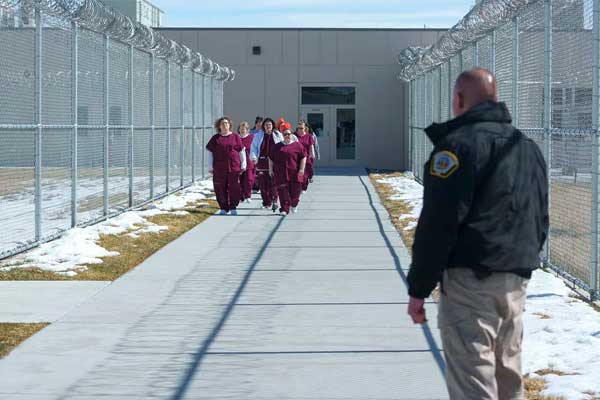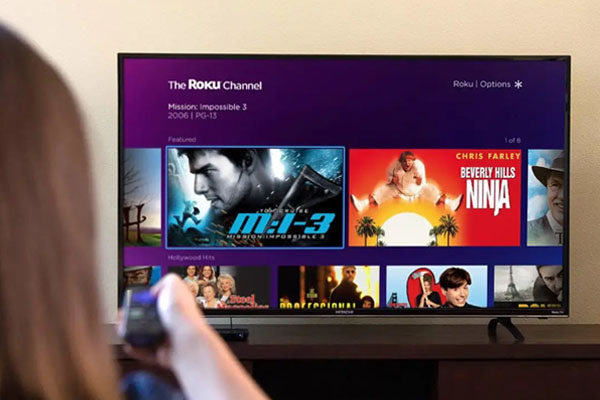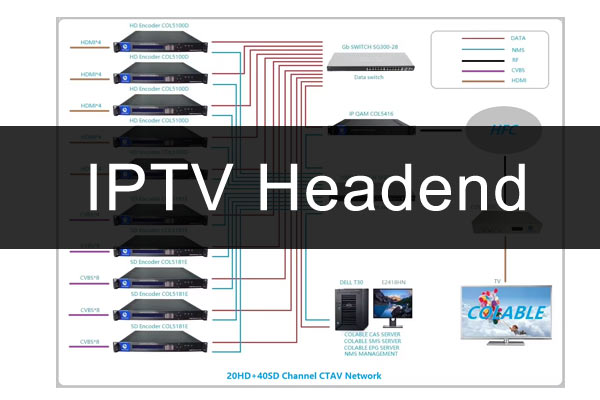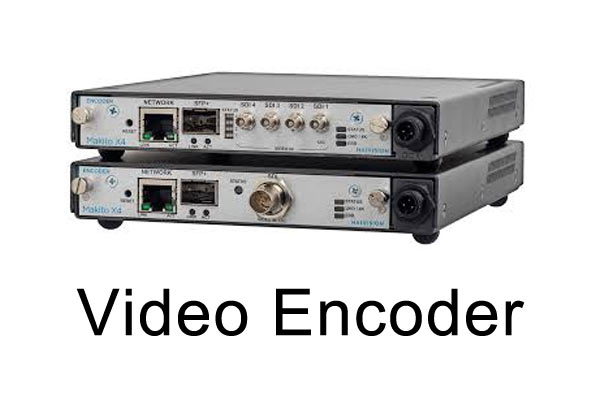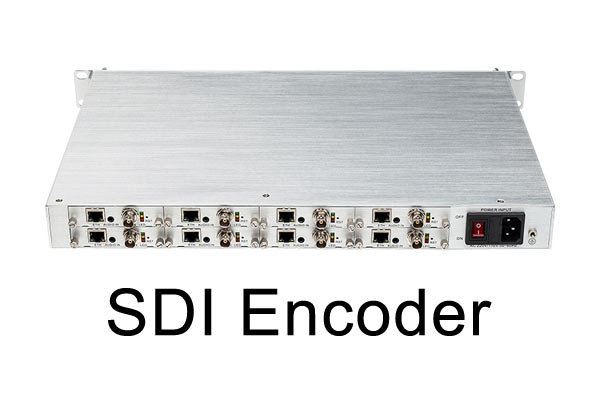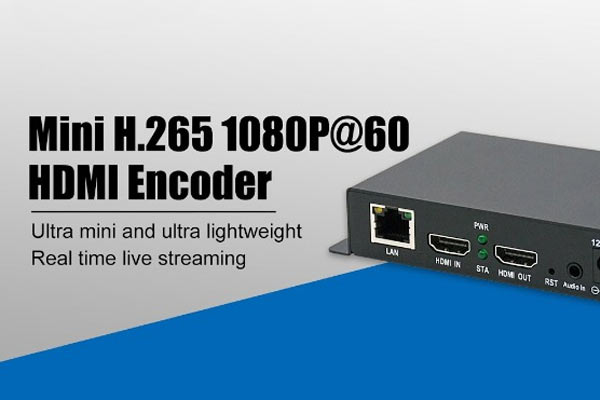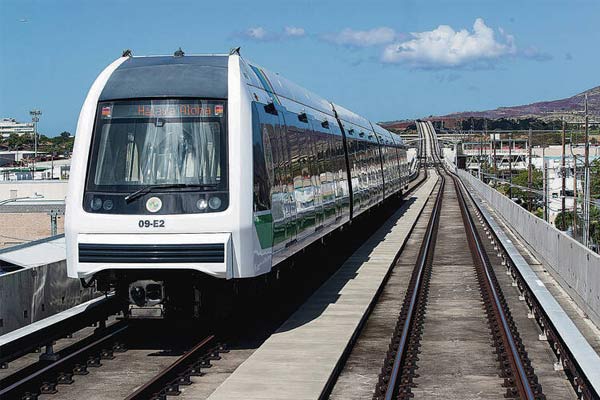
हट ट्याग
लोकप्रिय खोज
स्कूलहरूको लागि आईपीटीभी अँगालेको: नवीन प्रविधिहरू मार्फत शिक्षा क्रान्ति
आजको डिजिटल युगमा, विद्यालयहरूले शैक्षिक अनुभव बृद्धि गर्न नवीन प्रविधिहरू अँगालेका छन्। यस्तै एउटा प्रविधि हो IPTV (इन्टरनेट प्रोटोकल टेलिभिजन), जसले इन्टरनेटमा टेलिभिजन सेवाहरू प्रदान गर्दछ। IPTV को साथ, स्कूलहरूले सामग्री वितरण, सञ्चार, र प्रशासनिक कार्यहरूमा क्रान्तिकारी परिवर्तन गर्न सक्छन्।

IPTV ले विद्यालयहरूलाई अन्तरक्रियात्मक सिकाइ अनुभवहरू प्रदान गर्न, शैक्षिक स्रोतहरूको विस्तृत दायरा पहुँच गर्न र मागमा सामग्री प्रस्ताव गर्न सक्षम बनाउँछ। यसले क्याम्पस-व्यापी घोषणाहरू, कार्यक्रमहरूको लाइभ स्ट्रिमिङ, र दूरी शिक्षाका अवसरहरूलाई सुविधा दिन्छ। अवस्थित प्रणालीहरूसँग IPTV एकीकृत गरेर, विद्यालयहरूले कुशलतापूर्वक सामग्री वितरण गर्न, स्रोतहरू व्यवस्थित गर्न र थप आकर्षक सिकाइ वातावरण सिर्जना गर्न सक्छन्।
IPTV अँगाल्ने विद्यार्थीहरूलाई सशक्त बनाउँछ, सरोकारवालाहरूलाई संलग्न गराउँछ, र विद्यार्थीहरूलाई भविष्यको लागि तयार गर्छ। यसले सिक्ने नतिजाहरू बढाउँछ, सहयोगलाई बढाउँछ, र जोडिएको शैक्षिक समुदाय सिर्जना गर्छ। IPTV को साथ, स्कूलहरूले यसको पूर्ण क्षमतामा प्रविधिको उपयोग गरेर शिक्षाको भविष्यलाई आकार दिन सक्छन्।
सोधिने प्रश्न
Q1: विद्यालयहरूको लागि IPTV के हो?
A1: विद्यालयहरूको लागि IPTV ले शैक्षिक संस्थाहरूमा इन्टरनेट प्रोटोकल टेलिभिजन (IPTV) प्रविधिको प्रयोगलाई जनाउँछ। यसले विद्यालयहरूलाई लाइभ टिभी च्यानलहरू, मागमा भिडियो सामग्री, र मल्टिमिडिया स्रोतहरू सीधा विद्यालयको नेटवर्कमा विद्यार्थीहरूको यन्त्रहरूमा स्ट्रिम गर्न अनुमति दिन्छ।
Q2: IPTV ले स्कूलहरूलाई कसरी फाइदा पुर्याउन सक्छ?
A2: IPTV ले विद्यालयहरूका लागि धेरै फाइदाहरू प्रदान गर्दछ, जसमा शैक्षिक सामग्रीको उपलब्धता, विद्यार्थी र अभिभावकहरूसँग सुधारिएको सञ्चार, परम्परागत केबल वा स्याटेलाइट टिभी सदस्यताहरूको आवश्यकतालाई हटाएर लागत बचत, र सामग्री वितरणमा बढेको लचिलोपन मार्फत सिकाइ अनुभवहरू बढाउने क्षमता समावेश छ। ।
Q3: कुन प्रकारको शैक्षिक सामग्री IPTV मार्फत डेलिभर गर्न सकिन्छ?
A3: IPTV ले विद्यालयहरूलाई शैक्षिक टिभी कार्यक्रमहरू, वृत्तचित्रहरू, भाषा पाठ्यक्रमहरू, निर्देशनात्मक भिडियोहरू, भर्चुअल क्षेत्र यात्राहरू, शैक्षिक समाचारहरू, र थप जस्ता शैक्षिक सामग्रीहरूको विस्तृत श्रृंखला प्रदान गर्न सक्षम बनाउँछ। यो सामग्री विभिन्न उमेर समूहहरू र विषयहरू अनुरूप गर्न सकिन्छ, पाठ्यक्रमलाई समर्थन गर्दै र विद्यार्थीहरूलाई विभिन्न तरिकामा संलग्न गराउने।
Q4: स्कूलहरूको लागि IPTV सुरक्षित छ?
A4: हो, विद्यालयहरूका लागि IPTV लाई विद्यार्थीको डेटा सुरक्षित गर्न र सुरक्षित अवलोकन अनुभव सुनिश्चित गर्न सुरक्षा उपायहरूसँग डिजाइन गर्न सकिन्छ। सुरक्षित नेटवर्क प्रोटोकलहरू, प्रयोगकर्ता प्रमाणीकरण, इन्क्रिप्शन, र सामग्री फिल्टरिङ लागू गर्नाले अनधिकृत पहुँच र अनुपयुक्त सामग्रीहरू विरुद्ध सुरक्षा गर्न मद्दत गर्न सक्छ।
Q5: विद्यालयहरूको लागि IPTV कत्तिको भरपर्दो छ?
A5: विद्यालयहरूको लागि IPTV को विश्वसनीयता नेटवर्क पूर्वाधारको गुणस्तर र प्रयोग गरिएको IPTV समाधानमा निर्भर गर्दछ। विद्यालयहरूले बलियो नेटवर्क उपकरणहरूमा लगानी गर्नुपर्छ र प्रतिष्ठित IPTV प्रदायकहरूसँग विद्यार्थी र शिक्षकहरूको लागि स्थिर र निर्बाध स्ट्रिमिङ अनुभव सुनिश्चित गर्न काम गर्नुपर्छ।
Q6: स्कूल भित्र विभिन्न यन्त्रहरूमा IPTV पहुँच गर्न सकिन्छ?
A6: हो, IPTV सामग्री डेस्कटप कम्प्युटर, ल्यापटप, ट्याब्लेट, स्मार्टफोन र स्मार्ट टिभीहरू सहित विभिन्न यन्त्रहरूमा पहुँच गर्न सकिन्छ। यो लचिलोपनले विद्यार्थी र शिक्षकहरूलाई कक्षाकोठामा र टाढाबाट पनि शैक्षिक सामग्री पहुँच गर्न अनुमति दिन्छ, मिश्रित सिकाइ वातावरणलाई बढावा दिन्छ।
Q7: IPTV ले दूरी शिक्षामा कसरी मद्दत गर्छ?
A7: IPTV ले विद्यालयहरूलाई टाढाका विद्यार्थीहरूलाई लाइभ कक्षाहरू, रेकर्ड गरिएका व्याख्यानहरू, र अन्य शैक्षिक स्रोतहरूमा पहुँच प्रदान गर्न सक्षम बनाउँछ। IPTV प्रविधिको प्रयोग गरेर, विद्यालयहरूले यो सुनिश्चित गर्न सक्छन् कि दूरी शिक्षार्थीहरूले उनीहरूको व्यक्तिगत समकक्षहरू जस्तै शैक्षिक सामग्री प्राप्त गर्छन्, समावेशीता र शिक्षामा निरन्तरतालाई बढावा दिन्छ।
Q8: महत्त्वपूर्ण घोषणाहरू र घटनाहरू प्रसारण गर्न IPTV प्रयोग गर्न सकिन्छ?
A8: बिल्कुल! IPTV ले स्कूलहरूलाई महत्त्वपूर्ण घोषणाहरू, स्कूल-व्यापी कार्यक्रमहरू, अतिथि व्याख्यानहरू, र अन्य महत्त्वपूर्ण घटनाहरू वास्तविक समयमा प्रसारण गर्न अनुमति दिन्छ। यसले सुनिश्चित गर्दछ कि सबै विद्यार्थीहरू र कर्मचारीहरू सूचित र संलग्न रहन सक्छन्, तिनीहरूको भौतिक स्थानको पर्वाह नगरी।
Q9: विद्यालयहरूमा IPTV कार्यान्वयनको लागि कस्तो पूर्वाधार आवश्यक छ?
A9: विद्यालयहरूमा IPTV लागू गर्न उच्च-ब्यान्डविथ भिडियो स्ट्रिमिङ ह्यान्डल गर्न सक्षम बलियो नेटवर्क पूर्वाधार चाहिन्छ। यसमा भरपर्दो इन्टरनेट जडान, पर्याप्त नेटवर्क स्विचहरू, राउटरहरू, र पहुँच बिन्दुहरू, र मिडिया सामग्री भण्डारण गर्नको लागि पर्याप्त भण्डारण क्षमता समावेश छ।
Q10: विद्यालयहरूले IPTV मार्फत पठाइने सामग्री कसरी व्यवस्थित र व्यवस्थित गर्न सक्छन्?
A10: विद्यालयहरूले विशेष रूपमा IPTV को लागि डिजाइन गरिएको सामग्री व्यवस्थापन प्रणालीहरू प्रयोग गर्न सक्छन् तिनीहरूले वितरण गर्ने मिडिया सामग्रीलाई व्यवस्थित गर्न, वर्गीकरण गर्न र तालिका बनाउन। यी प्रणालीहरूले विद्यालयहरूलाई प्लेलिस्टहरू सिर्जना गर्न, प्रयोगकर्ता पहुँच प्रबन्ध गर्न, अवलोकन तथ्याङ्कहरू निगरानी गर्न, र सहज र व्यवस्थित सामग्री वितरण अनुभव सुनिश्चित गर्न अनुमति दिन्छ।
एक अवलोकन
A. IPTV प्रविधिको संक्षिप्त व्याख्या
IPTV एक अत्याधुनिक टेक्नोलोजी हो जसले इन्टरनेट प्रोटोकलहरूको लाभ उठाउँछ टेलिभिजन सेवाहरू र शैक्षिक सामग्री प्रयोगकर्ताहरूलाई IP-आधारित नेटवर्कमा प्रदान गर्न। रेडियो फ्रिक्वेन्सी संकेतहरू प्रयोग गर्ने परम्परागत प्रसारण विधिहरू विपरीत, IPTV ले इन्टरनेट जस्ता प्याकेट-स्विचिङ नेटवर्कहरू मार्फत सञ्चालन गर्दछ।
IPTV प्रणालीमा तीन मुख्य घटकहरू छन्:
- सामग्री वितरण प्रणाली: यस प्रणालीमा सर्भरहरू समावेश छन् जसले मिडिया सामग्रीहरू भण्डारण र व्यवस्थापन गर्दछ, जस्तै लाइभ टिभी च्यानलहरू, भिडियो-अन-डिमांड (VOD) पुस्तकालयहरू, शैक्षिक भिडियोहरू, र अन्य मल्टिमिडिया स्रोतहरू। सामग्री एन्कोड गरिएको छ, कम्प्रेस गरिएको छ, र अन्त-प्रयोगकर्ताहरूमा स्ट्रिम गरिएको छ।
- नेटवर्क पूर्वाधार: IPTV भिडियो संकेतहरू प्रसारण गर्न र सामग्रीको सहज डेलिभरी सुनिश्चित गर्न बलियो नेटवर्क पूर्वाधारमा निर्भर छ। यो पूर्वाधार स्थानीय क्षेत्र नेटवर्क (LAN), वाइड एरिया नेटवर्क (WAN), वा इन्टरनेट नै हुन सक्छ। सेवाको गुणस्तर (QoS) उपायहरू भिडियो ट्राफिकलाई प्राथमिकता दिन र इष्टतम अवलोकन अनुभवहरू कायम राख्न लागू गरिन्छ।
- अन्त-प्रयोगकर्ता उपकरणहरू: यी यन्त्रहरूले रिसीभरको रूपमा काम गर्छन् र प्रयोगकर्ताहरूलाई सामग्री प्रदर्शन गर्छन्। तिनीहरूले स्मार्ट टिभीहरू, कम्प्युटरहरू, ट्याब्लेटहरू, स्मार्टफोनहरू, वा समर्पित IPTV सेट-टप बक्सहरू समावेश गर्न सक्छन्। अन्त-प्रयोगकर्ताहरूले IPTV एप, वेब ब्राउजर, वा समर्पित IPTV सफ्टवेयर मार्फत सामग्री पहुँच गर्न सक्छन्।
IPTV को काम गर्ने संयन्त्रले निम्न चरणहरू समावेश गर्दछ:
- सामग्री प्राप्ति: शैक्षिक सामग्रीहरू प्रत्यक्ष टिभी प्रसारणहरू, VOD प्लेटफर्महरू, शैक्षिक प्रकाशकहरू, र आन्तरिक सामग्री निर्माण सहित विभिन्न स्रोतहरूबाट प्राप्त गरिन्छ।
- सामग्री एन्कोडिङ र प्याकेजिङ: प्राप्त सामग्री डिजिटल ढाँचाहरूमा इन्कोड गरिएको छ, संकुचित, र IP प्याकेटहरूमा प्याकेज गरिएको छ। यो प्रक्रियाले सामग्रीको गुणस्तर कायम राख्दै IP नेटवर्कहरूमा कुशल प्रसारण सुनिश्चित गर्दछ।
- सामग्री वितरण: सामग्री बोक्ने IP प्याकेटहरू नेटवर्क पूर्वाधार मार्फत अन्त-प्रयोगकर्ता उपकरणहरूमा डेलिभर गरिन्छ। नेटवर्क अवस्था र QoS प्यारामिटरहरूलाई ध्यानमा राख्दै प्याकेटहरू कुशलतापूर्वक राउट गरिएका छन्।
- सामग्री डिकोडिङ र प्रदर्शन: अन्त-प्रयोगकर्ता यन्त्रहरूमा, IP प्याकेटहरू प्राप्त हुन्छन्, डिकोड हुन्छन्, र अडियोभिजुअल सामग्रीको रूपमा प्रदर्शित हुन्छन्। प्रयोगकर्ताहरूले सामग्रीसँग अन्तर्क्रिया गर्न, प्लेब्याक नियन्त्रण गर्न, र उपशीर्षकहरू, अन्तरक्रियात्मक क्विजहरू, वा पूरक सामग्रीहरू जस्ता अतिरिक्त सुविधाहरू पहुँच गर्न सक्छन्।
IPTV प्रविधिले परम्परागत प्रसारण विधिहरूमा धेरै फाइदाहरू प्रदान गर्दछ। यसले सामग्री वितरणमा अझ बढी लचिलोपन प्रदान गर्दछ, विद्यालयहरूलाई प्रत्यक्ष प्रसारणहरू, शैक्षिक भिडियोहरूमा मागमा पहुँच, र सिकाइ अनुभव बढाउन अन्तरक्रियात्मक सुविधाहरू प्रदान गर्न अनुमति दिन्छ। IP नेटवर्कहरू प्रयोग गरेर, IPTV ले कुशल र लागत-प्रभावी सामग्री वितरण सुनिश्चित गर्दछ, विद्यालयहरूलाई फराकिलो दर्शकहरूमा पुग्न र शैक्षिक स्रोतहरू निर्बाध रूपमा वितरण गर्न सक्षम बनाउँछ।
B. आईपीटीभी अपनाउने विद्यालयहरूको आवश्यकतालाई आग्रह गर्दै
विद्यार्थीहरू IPTV को प्रयोगकर्ताहरूको रूपमा:
विद्यार्थीहरू आज डिजिटल नेटिभहरू हुन् जो डिजिटल प्लेटफर्महरू मार्फत जानकारी र मनोरञ्जन पहुँच गर्न अभ्यस्त छन्। IPTV अपनाएर, विद्यालयहरूले विभिन्न यन्त्रहरूमा सामग्री उपभोग गर्ने विद्यार्थीहरूको प्राथमिकताहरू पूरा गर्न सक्छन् र तिनीहरूलाई थप आकर्षक सिकाइ अनुभव प्रदान गर्न सक्छन्। IPTV ले विद्यार्थीहरूलाई शैक्षिक स्रोतहरू, अन्तरक्रियात्मक भिडियोहरू, प्रत्यक्ष व्याख्यानहरू, र कुनै पनि स्थानबाट माग गरिएका सामग्रीहरू पहुँच गर्न सक्षम बनाउँछ, स्वतन्त्र शिक्षा र ज्ञान अवधारणलाई बढावा दिन्छ।
शिक्षक र प्रशासकहरू IPTV को अपरेटरहरूको रूपमा:
IPTV ले शिक्षक र प्रशासकहरूलाई सामग्री निर्माण, वितरण र व्यवस्थापनका लागि प्रभावकारी उपकरणहरू प्रदान गर्दछ। शिक्षकहरूले सजिलैसँग शैक्षिक भिडियोहरू, रेकर्ड गरिएका व्याख्यानहरू, र पाठ्यक्रमसँग पङ्क्तिबद्ध पूरक सामग्रीहरू क्युरेट गर्न र साझेदारी गर्न सक्छन्। तिनीहरूले प्रत्यक्ष भर्चुअल कक्षाहरू, अन्तरक्रियात्मक सत्रहरू, र क्विजहरू पनि सञ्चालन गर्न सक्छन्, विद्यार्थीहरू बीच सक्रिय सहभागिता र सहयोगलाई बढावा दिन सक्छन्। प्रशासकहरूले कक्षाकोठा र क्याम्पसहरूमा एकरूपता सुनिश्चित गर्दै केन्द्रीय रूपमा सामग्री व्यवस्थापन र अद्यावधिक गर्न सक्छन्।
विद्यालयहरूमा विभिन्न सरोकारवालाहरूमा IPTV को प्रभाव:
- शिक्षकहरू: IPTV ले शिक्षकहरूलाई मल्टिमिडिया सामग्री, अन्तरक्रियात्मक क्विजहरू, र वास्तविक-समय प्रतिक्रिया समावेश गरेर उनीहरूको शिक्षण विधिहरू बृद्धि गर्न सक्षम बनाउँछ। तिनीहरूले शैक्षिक स्रोतहरूको विशाल पुस्तकालयमा पहुँच गर्न सक्छन्, वृत्तचित्रहरू, भर्चुअल फिल्ड ट्रिपहरू, र विषय-विशिष्ट भिडियोहरू सहित, तिनीहरूका पाठहरूलाई पूरक बनाउन। IPTV ले शिक्षक-विद्यार्थी सञ्चारलाई पनि सहज बनाउँछ, जसले उनीहरूलाई विद्यार्थीको व्यक्तिगत आवश्यकताहरू सम्बोधन गर्न र व्यक्तिगत मार्गदर्शन प्रदान गर्न अनुमति दिन्छ।
- विद्यार्थीहरू: IPTV ले विद्यार्थीहरूलाई गतिशील र इमर्सिभ सिकाइ वातावरण प्रदान गर्दछ। उनीहरूले शैक्षिक सामग्रीसँग थप अन्तरक्रियात्मक रूपमा संलग्न हुन सक्छन्, जसले गर्दा राम्रो बुझाइ र अवधारण हुन्छ। IPTV मार्फत, विद्यार्थीहरूले विद्यालय समयभन्दा बाहिरका शैक्षिक सामग्रीहरू पहुँच गर्न सक्छन्, पाठहरू आफ्नै गतिमा परिमार्जन गर्न सक्छन्, र आफ्नो बुझाइलाई गहिरो बनाउन थप स्रोतहरू अन्वेषण गर्न सक्छन्।
- अभिभावक: IPTV ले आमाबाबुलाई सूचित रहन र आफ्नो बच्चाको शिक्षामा संलग्न हुने क्षमता प्रदान गर्दछ। तिनीहरूले आफ्नो घरको आरामबाट विद्यालय प्रसारणहरू, घोषणाहरू, र महत्त्वपूर्ण अद्यावधिकहरू पहुँच गर्न सक्छन्। आईपीटीभीले अभिभावकहरूलाई आफ्नो बच्चाको प्रगति अनुगमन गर्न, रेकर्ड गरिएका व्याख्यानहरू हेर्न, र शिक्षकहरूसँग छलफल गर्न, घर र विद्यालय बीचको सहयोगी सम्बन्धलाई बढावा दिन अनुमति दिन्छ।
- प्रशासकहरू: IPTV ले कक्षाकोठा र क्याम्पसहरूमा सूचनाको निरन्तर प्रसार सुनिश्चित गर्दै, सामग्री व्यवस्थापनलाई केन्द्रीकृत गरेर प्रशासनिक कार्यहरू सुव्यवस्थित गर्दछ। यसले प्रशासकहरू, शिक्षकहरू, विद्यार्थीहरू, र अभिभावकहरू बीचको सञ्चारलाई अझ प्रभावकारी र जडान गरिएको विद्यालय समुदायको नेतृत्व गर्दछ। थप रूपमा, आईपीटीभी आपतकालीन सूचनाहरू, क्याम्पस-व्यापी घोषणाहरू, र कार्यक्रम प्रसारण, सुरक्षा उपायहरू र समग्र विद्यालय अनुभव सुधार गर्न प्रयोग गर्न सकिन्छ।
विद्यालयहरूमा IPTV को अपनाउने शिक्षा क्षेत्रको विकसित आवश्यकताहरूलाई सम्बोधन गर्दछ, एक प्रविधि-संचालित समाधान प्रदान गर्दछ जसले शिक्षण, सिकाइ, र सञ्चारलाई बढाउँछ। IPTV को सम्भाव्यताको फाइदा उठाएर, विद्यालयहरूले विद्यार्थी, शिक्षक, प्रशासक र अभिभावकहरूको विविध आवश्यकताहरू पूरा गर्ने परिवर्तनकारी शैक्षिक वातावरण सिर्जना गर्न सक्छन्।
IPTV फाइदाहरू
A. विद्यार्थीहरूको लागि परिष्कृत सिक्ने अनुभव
IPTV टेक्नोलोजीले धेरै फाइदाहरू प्रदान गर्दछ जसले विद्यार्थीहरूको लागि सिकाइ अनुभव बृद्धि गर्दछ:
- अन्तरक्रियात्मक शिक्षा: IPTV ले क्विज, पोल र वास्तविक समय प्रतिक्रिया जस्ता सुविधाहरू समावेश गरेर अन्तरक्रियात्मक सिकाइ अनुभवहरू सक्षम बनाउँछ। विद्यार्थीहरूले सामग्रीसँग सक्रिय रूपमा संलग्न हुन सक्छन्, छलफलहरूमा भाग लिन सक्छन्, र अन्तरक्रियात्मक अभ्यासहरू मार्फत आफ्नो समझलाई सुदृढ गर्न सक्छन्।
- मल्टिमिडिया सामग्री: IPTV ले शैक्षिक भिडियोहरू, वृत्तचित्रहरू, र एनिमेसनहरू सहित शैक्षिक स्रोतहरूको विस्तृत श्रृंखलामा पहुँच प्रदान गर्दछ। भिजुअल र अडियो सामग्रीले विद्यार्थीको संलग्नतालाई उत्तेजित गर्छ, बुझ्ने क्षमता बढाउँछ र विभिन्न सिकाइ शैलीहरूलाई पूरा गर्छ।
- लचिलो सिकाइ वातावरण: IPTV को साथ, सिकाइ कक्षाकोठामा सीमित छैन। विद्यार्थीहरूले कुनै पनि स्थानबाट, कुनै पनि समयमा, र विभिन्न उपकरणहरूमा शैक्षिक सामग्री पहुँच गर्न सक्छन्। यो लचिलोपनले स्वतन्त्र सिकाइलाई बढावा दिन्छ, व्यक्तिगत निर्देशनलाई सहज बनाउँछ, र विभिन्न विद्यार्थी आवश्यकताहरू समायोजन गर्दछ।
B. शैक्षिक सामग्रीमा पहुँच वृद्धि
IPTV टेक्नोलोजीले शैक्षिक सामग्रीमा पहुँच विस्तार गर्दछ, यो सुनिश्चित गर्दै कि विद्यार्थीहरूको औँलाको छेउमा स्रोतहरूको सम्पत्ति छ:
- दूर शिक्षा: IPTV ले विद्यालयहरूलाई टाढाबाट सिक्ने अवसरहरू प्रदान गर्न अनुमति दिन्छ, विशेष गरी जहाँ शारीरिक उपस्थिति चुनौतीपूर्ण वा असम्भव छ। विद्यार्थीहरूले प्रत्यक्ष व्याख्यानहरू, रेकर्ड गरिएका पाठहरू, र शैक्षिक सामग्रीहरू घर वा अन्य कुनै पनि स्थानबाट इन्टरनेट जडानको साथ पहुँच गर्न सक्छन्।
- मागमा सामग्री: IPTV ले विद्यार्थीहरूलाई आफ्नै गतिमा सिक्नको लागि लचिलोपन प्रदान गर्दै शैक्षिक सामग्रीमा मागमा पहुँच प्रदान गर्दछ। तिनीहरूले विषयहरू पुन: हेर्न सक्छन्, पाठहरू पुन: हेर्न सक्छन्, र आवश्यक पर्दा पूरक सामग्रीहरू पहुँच गर्न सक्छन्, विषयवस्तुको गहिरो बुझाइ बढाउँदै।
- विशाल सामग्री पुस्तकालयहरू: IPTV प्लेटफर्महरूले पाठ्यपुस्तकहरू, सन्दर्भ सामग्रीहरू, र मल्टिमिडिया स्रोतहरू सहित शैक्षिक सामग्रीको विस्तृत पुस्तकालयहरू होस्ट गर्न सक्छन्। स्रोतहरूको यो सम्पत्तिले पाठ्यक्रम आवश्यकताहरूलाई समर्थन गर्दछ, आत्म-अध्ययनलाई सहज बनाउँछ, र स्वतन्त्र अनुसन्धानलाई प्रोत्साहित गर्दछ।
C. विद्यालयहरूको लागि लागत-प्रभावी समाधान
IPTV ले सामग्री वितरणको परम्परागत विधिहरूको तुलनामा विद्यालयहरूको लागि लागत-प्रभावी समाधान प्रदान गर्दछ:
- पूर्वाधार उपयोग: IPTV ले विद्यमान सञ्जाल पूर्वाधारको लाभ उठाउँछ, थप महँगो लगानीको आवश्यकतालाई कम गर्छ। विद्यालयहरूले आफ्नो इन्टरनेट जडान र स्थानीय क्षेत्र नेटवर्क (LAN) को प्रयोग गरी शैक्षिक सामग्री निर्बाध रूपमा वितरण गर्न सक्छन्।
- कुनै महँगो हार्डवेयर छैन: IPTV को साथ, विद्यालयहरूले महँगो प्रसारण उपकरणहरू जस्तै स्याटेलाइट डिश वा केबल जडानहरूको आवश्यकता हटाउँछन्। यसको सट्टा, सामग्री आईपी नेटवर्कहरूमा स्ट्रिम गरिएको छ, हार्डवेयर लागतहरू उल्लेखनीय रूपमा घटाउँदै।
- केन्द्रीकृत सामग्री व्यवस्थापन: IPTV ले विद्यालयहरूलाई भौतिक वितरण र मुद्रण लागतहरूको आवश्यकतालाई हटाउँदै केन्द्रीय रूपमा सामग्री व्यवस्थापन र वितरण गर्न अनुमति दिन्छ। शैक्षिक सामग्रीहरूमा अद्यावधिकहरू र परिमार्जनहरू सबै उपकरणहरूमा सजिलै र तुरुन्तै गर्न सकिन्छ।
D. सरोकारवालाहरू बीचको सञ्चार र सहकार्यमा सुधार
IPTV ले स्कूल समुदायमा विभिन्न सरोकारवालाहरू बीच प्रभावकारी सञ्चार र सहयोगलाई सक्षम बनाउँछ:
- शिक्षक-विद्यार्थी अन्तरक्रिया: IPTV ले भर्चुअल सेटिङहरूमा पनि शिक्षक र विद्यार्थीहरू बीच वास्तविक-समय अन्तरक्रियाको सुविधा दिन्छ। विद्यार्थीहरूले प्रश्नहरू सोध्न सक्छन्, स्पष्टीकरण खोज्न सक्छन्, र आफ्ना शिक्षकहरूबाट तत्काल प्रतिक्रिया प्राप्त गर्न सक्छन्, एक सहायक र आकर्षक सिकाइ वातावरणलाई बढावा दिन सक्छन्।
- अभिभावक-विद्यालय सञ्चार: IPTV प्लेटफर्महरूले विद्यालयहरूलाई महत्त्वपूर्ण जानकारी, घोषणाहरू, र अभिभावकहरूलाई अद्यावधिकहरू सञ्चार गर्न एउटा च्यानल प्रदान गर्दछ। अभिभावकहरूले स्कूलका घटनाहरू, पाठ्यक्रम परिवर्तनहरू, र तिनीहरूको बच्चाको प्रगतिको बारेमा सूचित रहन सक्छन्, बलियो गृह-विद्यालय साझेदारीलाई बढावा दिँदै।
- सहयोगात्मक शिक्षा: IPTV ले समूह छलफल, साझा कार्यस्थान, र सहयोगी परियोजनाहरू जस्ता सुविधाहरू मार्फत विद्यार्थीहरू बीचको सहकार्यलाई बढावा दिन्छ। विद्यार्थीहरूले असाइनमेन्टहरूमा सँगै काम गर्न सक्छन्, विचारहरू साझा गर्न सक्छन्, र एकअर्काबाट सिक्न, टोली कार्य र आलोचनात्मक सोच कौशलको पालनपोषण गर्न सक्छन्।
E. अनुकूलन योग्य र स्केलेबल प्रणाली
IPTV प्रणालीहरूले स्कूलहरूको अद्वितीय आवश्यकताहरू पूरा गर्न लचिलोपन र स्केलेबिलिटी प्रदान गर्दछ:
- अनुकूलन योग्य सामग्री: विद्यालयहरूले आफ्नो पाठ्यक्रम र शैक्षिक उद्देश्यहरूसँग पङ्क्तिबद्ध गर्न IPTV च्यानलहरू, प्लेलिस्टहरू, र सामग्री पुस्तकालयहरू अनुकूलित गर्न सक्छन्। विद्यार्थी र शिक्षकहरूको विविध आवश्यकताहरू पूरा गर्न विषय, ग्रेड स्तर, वा विशिष्ट सिकाइ लक्ष्यहरूद्वारा सामग्री व्यवस्थित गर्न सकिन्छ।
- Scalability: IPTV प्रणालीहरू स्केलेबल छन्, जसले विद्यालयहरूलाई तिनीहरू बढ्दै जाँदा प्रणाली विस्तार गर्न अनुमति दिन्छ। चाहे यसले थप च्यानलहरू थप्ने हो, प्रयोगकर्ताहरूको सङ्ख्या बढाउने होस्, वा थप सुविधाहरू समावेश गर्ने होस्, IPTV ले महत्त्वपूर्ण पूर्वाधार परिवर्तनहरू बिना विद्यालयहरूको विकसित आवश्यकताहरू समायोजन गर्न सक्छ।
- अवस्थित प्रणालीहरूसँग एकीकरण: IPTV समाधानहरू विद्यमान IT पूर्वाधार, शिक्षा व्यवस्थापन प्रणाली, वा शैक्षिक सफ्टवेयरसँग सहज रूपमा एकीकृत गर्न सकिन्छ। यो एकीकरणले सहज संक्रमण सुनिश्चित गर्दछ र विद्यालयहरूलाई उनीहरूको हालको प्रविधि लगानीको लाभ उठाउन अनुमति दिन्छ।
विद्यालय उद्योगमा IPTV द्वारा प्रदान गरिएका फाइदाहरूले यसलाई स्कूलहरूको लागि अपनाउनु पर्ने प्रविधि बनाउँछ। यसले सिकाइ अनुभवलाई बढाउँछ, शैक्षिक सामग्रीमा पहुँच बढाउँछ, लागत-प्रभावी समाधानहरू प्रदान गर्दछ, सञ्चार र सहकार्यमा सुधार गर्छ, र विद्यालय र उनीहरूका सरोकारवालाहरूको अद्वितीय आवश्यकताहरू पूरा गर्न अनुकूलन योग्य र स्केलेबल प्रणालीहरू प्रदान गर्दछ।
तपाईंलाई आवश्यक पर्ने उपकरण
विद्यालयहरूमा IPTV प्रणाली लागू गर्न, निम्न उपकरणहरू सामान्यतया आवश्यक हुन्छ:
A. अन्तिम प्रयोगकर्ता यन्त्रहरू
अन्त-प्रयोगकर्ता उपकरणहरू IPTV प्रणालीको एक आवश्यक घटक हुन्, जसले IPTV सामग्रीको लागि रिसीभरहरू र प्रदर्शनहरूको रूपमा सेवा गर्दछ। तिनीहरूले विद्यार्थीहरू, शिक्षकहरू, र प्रशासकहरूलाई पहुँच गर्न र शैक्षिक स्रोतहरूसँग अन्तर्क्रिया गर्न प्रयोगकर्ता-अनुकूल इन्टरफेस प्रदान गर्दछ।
- स्मार्ट टिभीहरू: स्मार्ट टिभीहरू इन्टरनेट-जडित टेलिभिजनहरू हुन् जसमा निर्मित IPTV क्षमताहरू छन्। तिनीहरूले प्रयोगकर्ताहरूलाई अतिरिक्त उपकरणहरूको आवश्यकता बिना आईपीटीभी सामग्री सीधा पहुँच गर्न अनुमति दिन्छ। स्मार्ट टिभीहरूले तिनीहरूको ठूला स्क्रिनहरू र प्रयोगकर्ता-अनुकूल इन्टरफेसहरूका साथ सहज अवलोकन अनुभव प्रदान गर्दछ।
- कम्प्युटरहरू: डेस्कटप र ल्यापटपहरू सहित कम्प्युटरहरू, IPTV अनुप्रयोगहरू वा वेब-आधारित इन्टरफेसहरू पहुँच गरेर IPTV यन्त्रहरूको रूपमा प्रयोग गर्न सकिन्छ। तिनीहरूले प्रयोगकर्ताहरूलाई IPTV सामग्री स्ट्रिम गर्न लचिलोपन र सुविधा प्रदान गर्दछ जबकि अन्य शैक्षिक स्रोतहरू र अनुप्रयोगहरूमा एकै साथ पहुँच छ।
- ट्याबलेटहरू: ट्याब्लेटहरूले IPTV सामग्रीको लागि पोर्टेबल र अन्तरक्रियात्मक अवलोकन अनुभव प्रदान गर्दछ। तिनीहरूको टच स्क्रिन र कम्प्याक्ट डिजाइनले तिनीहरूलाई विद्यार्थी र शिक्षकहरूको लागि शैक्षिक स्रोतहरूमा पहुँच गर्नको लागि आदर्श बनाउँछ। ट्याब्लेटहरूले सिक्न र सहयोगको लागि बहुमुखी प्लेटफर्म प्रदान गर्दछ।
- स्मार्टफोन: स्मार्टफोनहरू सर्वव्यापी उपकरणहरू हुन् जसले प्रयोगकर्ताहरूलाई जुनसुकै बेला, कहीं पनि IPTV सामग्री पहुँच गर्न अनुमति दिन्छ। तिनीहरूको मोबाइल क्षमताहरूको साथ, प्रयोगकर्ताहरूले उनीहरूको स्मार्टफोनमा शैक्षिक भिडियोहरू, लाइभ स्ट्रिमहरू, वा मागमा सामग्रीहरू हेर्न सक्छन्। स्मार्टफोनले हातको हत्केलामा शैक्षिक स्रोतहरू पहुँच गर्ने सुविधा प्रदान गर्दछ।
- समर्पित IPTV सेट-टप बक्सहरू: समर्पित IPTV सेट-टप बक्सहरू विशेष रूपमा IPTV स्ट्रिमिङका लागि डिजाइन गरिएका उद्देश्य-निर्मित यन्त्रहरू हुन्। तिनीहरू प्रयोगकर्ताको टेलिभिजनमा जडान हुन्छन् र IPTV सामग्री पहुँच गर्नको लागि सिमलेस इन्टरफेस प्रदान गर्दछ। सेट-टप बक्सहरूले प्रायः उन्नत सुविधाहरू प्रदान गर्दछ जस्तै DVR क्षमताहरू, च्यानल गाइडहरू, र अन्तरक्रियात्मक सुविधाहरू।
अन्त-प्रयोगकर्ता उपकरणहरूले IPTV प्रणाली मार्फत पठाइएका शैक्षिक सामग्रीहरू पहुँच गर्न प्रयोगकर्ताहरूको लागि गेटवेको रूपमा सेवा गर्छन्। तिनीहरूले विद्यार्थीहरू, शिक्षकहरू, र प्रशासकहरूलाई शैक्षिक स्रोतहरू अन्वेषण गर्न, अन्तरक्रियात्मक सामग्रीसँग संलग्न हुन, र सिकाइ अनुभव बढाउनको लागि सुविधाजनक र सहज इन्टरफेस प्रदान गर्दछ।
B. IPTV हेडएन्ड उपकरण
IPTV हेडएन्ड एक हो एक IPTV प्रणाली को महत्वपूर्ण घटक, भिडियो सामग्री प्राप्त गर्न, प्रशोधन गर्न र वितरण गर्न जिम्मेवार। यसले अन्त-प्रयोगकर्ताहरूलाई कुशल सामग्री डेलिभरी सुनिश्चित गर्न सँगै काम गर्ने विभिन्न उपकरणहरू समावेश गर्दछ।
- भिडियो सङ्केतकहरू: भिडियो एन्कोडरहरू रूपान्तरण एनालग वा डिजिटल भिडियो संकेतहरू IP नेटवर्कहरूमा प्रसारणको लागि उपयुक्त कम्प्रेस्ड डिजिटल ढाँचाहरूमा। तिनीहरूले लाइभ टिभी च्यानलहरू वा भिडियो स्रोतहरू इन्कोड गर्छन्, अनुकूलता र अन्त-प्रयोगकर्ता उपकरणहरूमा कुशल डेलिभरी सुनिश्चित गर्दै।
- ट्रान्सकोडरहरू: ट्रान्सकोडरहरूले वास्तविक-समय ट्रान्सकोडिङ प्रदर्शन गर्दछ, भिडियो सामग्रीलाई एक ढाँचाबाट अर्कोमा रूपान्तरण गर्दछ। तिनीहरूले अनुकूलन बिटरेट स्ट्रिमिङ सक्षम पार्छन्, IPTV प्रणालीलाई नेटवर्क अवस्था र उपकरण क्षमताहरूमा आधारित विभिन्न गुणस्तर स्तरहरूमा सामग्री डेलिभर गर्न अनुमति दिन्छ।
- सामग्री व्यवस्थापन प्रणाली (CMS): CMS ले IPTV हेडएन्ड भित्र मिडिया सामग्रीको केन्द्रीकृत व्यवस्थापन प्रदान गर्दछ। यसले सामग्री संगठन, मेटाडेटा ट्यागिङ, सम्पत्ति तयारी, र वितरणको लागि सामग्रीको समयतालिका सुविधा दिन्छ।
- भिडियो-अन-डिमांड (VOD) सर्भरहरू: VOD सर्भरहरूले शैक्षिक भिडियोहरू र अन्य मिडिया स्रोतहरू सहित, माग-अनुरूप भिडियो सामग्री भण्डार र व्यवस्थापन गर्दछ। तिनीहरूले प्रयोगकर्ताहरूलाई उनीहरूको सुविधामा यी स्रोतहरू पहुँच गर्न सक्षम बनाउँछन्, शैक्षिक सामग्रीहरूको विस्तृत पुस्तकालय उपलब्ध गराउँछन्।
- IPTV सर्भर: यो सर्भरले लाइभ टिभि च्यानलहरू, भिडियो-अन-डिमांड (VOD) पुस्तकालयहरू, र शैक्षिक भिडियोहरू सहित मिडिया सामग्रीहरू भण्डारण र व्यवस्थापन गर्दछ। यसले अन्त-प्रयोगकर्ता उपकरणहरूमा स्ट्रिमिङको लागि सामग्रीको उपलब्धता र पहुँच सुनिश्चित गर्दछ।
- सशर्त पहुँच प्रणाली (CAS): CAS ले IPTV सामग्रीमा सुरक्षित पहुँच सुनिश्चित गर्दछ र अनाधिकृत अवलोकन रोक्छ। यसले इन्क्रिप्शन र डिक्रिप्शन मेकानिजमहरू प्रदान गर्दछ, सामग्रीको सुरक्षा गर्दछ र यो सुनिश्चित गर्दछ कि केवल अधिकृत प्रयोगकर्ताहरूले यसलाई पहुँच गर्न सक्छन्।
- मिडलवेयर: मिडलवेयर पुलको रूपमा काम गर्दछ IPTV सेवाहरू र अन्त-प्रयोगकर्ता उपकरणहरू बीच। यसले प्रयोगकर्ता प्रमाणीकरण, सामग्री नेभिगेसन, इलेक्ट्रोनिक प्रोग्राम गाइड (ईपीजी), र अन्तरक्रियात्मक सुविधाहरू ह्यान्डल गर्दछ, सहज प्रयोगकर्ता अनुभव प्रदान गर्दछ।
- नेटवर्क पूर्वाधार: नेटवर्क पूर्वाधारमा राउटरहरू, स्विचहरू, र IPTV हेडएन्ड भित्र IP-आधारित भिडियो सामग्री प्रसारण र व्यवस्थापन गर्न आवश्यक अन्य नेटवर्किङ उपकरणहरू समावेश छन्। यसले प्रणाली भरि विश्वसनीय र कुशल डाटा स्थानान्तरण सुनिश्चित गर्दछ।
यी IPTV हेडएन्डका प्रमुख उपकरण घटकहरू हुन्, प्रत्येकले IPTV प्रणालीको समग्र कार्यमा महत्त्वपूर्ण भूमिका खेल्छ। तिनीहरूको सहयोगले भिडियो सामग्रीको स्वागत, प्रशोधन र वितरणलाई निर्बाध रूपमा सक्षम बनाउँछ, अन्त-प्रयोगकर्ताहरूको लागि इमर्सिभ र भरपर्दो अवलोकन अनुभव सुनिश्चित गर्दै।
तपाईं मनपर्छ: IPTV हेडएन्ड उपकरण सूची पूरा गर्नुहोस् (र कसरी छनौट गर्ने)
C. सामग्री वितरण नेटवर्क (CDN)
एक CDN ले अन्त-प्रयोगकर्ताहरूको नजिक अवस्थित सर्भरहरूमा मिडिया फाइलहरू प्रतिकृति र वितरण गरेर सामग्री डेलिभरीलाई अनुकूलन गर्दछ। यसले नेटवर्क भीड कम गर्छ, बफरिङ वा विलम्बता समस्याहरू कम गर्छ, र स्ट्रिमिङ गुणस्तर सुधार गर्छ।
- सामग्री प्रतिकृति र वितरण: CDN ले विभिन्न भौगोलिक क्षेत्रहरूमा रणनीतिक रूपमा अवस्थित सर्भरहरूमा मिडिया फाइलहरू प्रतिकृति र वितरण गर्दछ। यो वितरणले अन्त-प्रयोगकर्ताहरूलाई छिटो र अधिक कुशल सामग्री डेलिभरीको लागि अनुमति दिन्छ। सामग्रीलाई प्रयोगकर्ताहरूको नजिक ल्याएर, CDN ले विलम्बता घटाउँछ र समग्र स्ट्रिमिङ कार्यसम्पादनमा सुधार गर्छ।
- नेटवर्क अनुकूलन: एक CDN ले नेटवर्क भीड कम गरेर र केन्द्रीय IPTV सर्भरमा तनाव कम गरेर नेटवर्क प्रदर्शनलाई अनुकूलन गर्दछ। यो उपलब्ध सबैभन्दा कुशल नेटवर्क मार्गहरू प्रयोग गरेर, निकटतम CDN सर्भरमा प्रयोगकर्ता अनुरोधहरूलाई बुद्धिमानी राउट गरेर यो प्राप्त गर्दछ। यो अप्टिमाइजेसनले छिटो सामग्री डेलिभरी र अन्त-प्रयोगकर्ताहरूको लागि सहज स्ट्रिमिङ अनुभवको परिणाम दिन्छ।
- सुधारिएको स्ट्रिमिङ गुणस्तर: बफरिङ र विलम्बता समस्याहरू घटाएर, CDN ले IPTV सामग्रीको स्ट्रिमिङ गुणस्तर बढाउँछ। अन्त-प्रयोगकर्ताहरूले न्यूनतम अवरोधहरू र ढिलाइहरू अनुभव गर्छन्, जसले थप रमाइलो र इमर्सिभ अवलोकन अनुभव दिन्छ। एक CDN ले सुनिश्चित गर्दछ कि सामग्री निर्बाध रूपमा डेलिभर गरिएको छ, शिखर उपयोग अवधिहरूमा पनि।
- लोड सन्तुलन: CDN ले धेरै सर्भरहरूमा लोडलाई सन्तुलनमा राख्छ, कुशल स्रोत उपयोग र स्केलेबिलिटीको लागि अनुमति दिँदै। यसले स्वचालित रूपमा उपलब्ध सर्भरहरूमा ट्राफिकलाई पुन: निर्देशित गर्दछ, सुनिश्चित गर्दछ कि कुनै एकल सर्भर ओभरलोड हुँदैन। लोड सन्तुलनले IPTV प्रणालीको समग्र स्थिरता र विश्वसनीयतामा योगदान पुर्याउँछ।
- सामग्री सुरक्षा र संरक्षण: CDN ले सामग्रीलाई अनधिकृत पहुँच, सामग्री चोरी, वा पाइरेसीबाट जोगाउन थप सुरक्षा उपायहरू प्रस्ताव गर्न सक्छ। यसले इन्क्रिप्शन संयन्त्रहरू, डिजिटल अधिकार व्यवस्थापन (DRM), र सामग्री पहुँच प्रतिबन्धहरू लागू गर्न सक्छ, ट्रान्जिटको समयमा सामग्रीको सुरक्षा गर्दै र इजाजतपत्र सम्झौताहरूको अनुपालन सुनिश्चित गर्न सक्छ।
- विश्लेषण र रिपोर्टिङ: केही CDN ले विश्लेषण र रिपोर्टिङ सुविधाहरू प्रदान गर्दछ, प्रयोगकर्ता व्यवहार, सामग्री प्रदर्शन, र नेटवर्क प्रदर्शनमा अन्तर्दृष्टि प्रदान गर्दछ। यी विश्लेषणहरूले प्रशासकहरूलाई दर्शकहरूको ढाँचाहरू बुझ्न, सम्भावित समस्याहरू पहिचान गर्न, र IPTV प्रणाली सुधार गर्न डेटा-संचालित निर्णयहरू गर्न मद्दत गर्दछ।
विशिष्ट अनुप्रयोगहरू
IPTV टेक्नोलोजीले विभिन्न विशिष्ट अनुप्रयोगहरू प्रदान गर्दछ जसले विद्यालय र शैक्षिक संस्थाहरूको अद्वितीय आवश्यकताहरू पूरा गर्दछ:
A. क्याम्पस र छात्रावासहरूको लागि IPTV
IPTV ले क्याम्पस र छात्रावास भित्र संचार र मनोरञ्जन बढाउन सक्छ:
- क्याम्पस घोषणाहरू: IPTV ले विद्यालयहरूलाई क्याम्पस-व्यापी घोषणाहरू प्रसारण गर्न अनुमति दिन्छ, कार्यक्रम तालिकाहरू, महत्त्वपूर्ण सूचनाहरू, र आपतकालीन अलर्टहरू सहित, समयमै र व्यापक सञ्चार सुनिश्चित गर्दै।
- आवासीय मनोरञ्जन: IPTV ले लाइभ टिभी च्यानलहरू, अन-डिमांड चलचित्रहरू, र छात्रावासमा बस्ने विद्यार्थीहरूको मनोरञ्जन सामग्रीहरूमा पहुँच प्रदान गर्न सक्छ, उनीहरूको मनोरञ्जन अनुभवलाई बढाउँदै।
- क्याम्पस समाचार र घटनाक्रम: विद्यालयहरूले समाचार, अपडेटहरू, र क्याम्पस गतिविधिहरूको हाइलाइटहरू प्रसारण गर्न, विद्यार्थी संलग्नतालाई प्रोत्साहित गर्न र समुदायको भावनालाई बढावा दिन समर्पित IPTV च्यानलहरू सिर्जना गर्न सक्छन्।
B. IPTV मार्फत दूरी शिक्षा
IPTV ले स्कूलहरूलाई टाढाको शिक्षा अवसरहरू प्रदान गर्न सक्षम गर्दछ:
- भर्चुअल कक्षाहरू: IPTV ले कक्षाहरूको लाइभ स्ट्रिमिङको सुविधा दिन्छ, विद्यार्थीहरूलाई उनीहरूको भौतिक स्थानको पर्वाह नगरी वास्तविक-समय छलफल र व्याख्यानहरूमा टाढाबाट भाग लिन सक्षम बनाउँछ।
- रेकर्ड गरिएका पाठहरू: शिक्षकहरूले प्रत्यक्ष सत्रहरू रेकर्ड गर्न सक्छन् र तिनीहरूलाई मागमा हेर्नको लागि उपलब्ध गराउन सक्छन्। यसले विद्यार्थीहरूलाई छुटेका कक्षाहरू पहुँच गर्न, सामग्री समीक्षा गर्न, र उनीहरूको बुझाइलाई आफ्नै गतिमा सुदृढ गर्न अनुमति दिन्छ।
- सहयोगात्मक शिक्षा: IPTV प्लेटफर्महरूले विद्यार्थीहरू बीचको सहकार्यलाई बढावा दिन अन्तरक्रियात्मक सुविधाहरू समावेश गर्न सक्छन्, उनीहरूलाई भर्चुअल समूह छलफलमा संलग्न हुन, फाइलहरू साझेदारी गर्न, र परियोजनाहरूमा सँगै काम गर्न अनुमति दिन्छ।
C. IPTV सँग ई-लर्निङ अवसरहरू
आईपीटीभीले विद्यालयहरूमा ई-शिक्षा पहलहरू बढाउँछ:
- शैक्षिक सामग्री पुस्तकालयहरू: विद्यालयहरूले IPTV मार्फत पहुँचयोग्य शैक्षिक भिडियोहरू, वृत्तचित्रहरू, र मल्टिमिडिया स्रोतहरूको विस्तृत पुस्तकालयहरू क्युरेट गर्न सक्छन्। यसले विद्यार्थीहरूलाई उनीहरूको पाठ्यक्रमसँग पङ्क्तिबद्ध विविध सिकाइ सामग्रीहरू अन्वेषण गर्न सक्षम बनाउँछ।
- पूरक स्रोतहरू: IPTV प्लेटफर्महरूले पूरक सामग्रीहरू प्रदान गर्न सक्छन्, जस्तै ई-पुस्तकहरू, अन्तरक्रियात्मक क्विजहरू, र अध्ययन गाइडहरू, विद्यार्थीहरूलाई उनीहरूको ज्ञानलाई अझ गहिरो बनाउन र अवधारणाहरूलाई सुदृढ गर्न थप स्रोतहरू प्रदान गर्दै।
- भर्चुअल फिल्ड ट्रिप्स: IPTV ले भर्चुअल फिल्ड ट्रिप अनुभवहरू प्रदान गर्न सक्छ, जसले विद्यार्थीहरूलाई उनीहरूको कक्षाकोठाको आरामबाट संग्रहालयहरू, ऐतिहासिक स्थलहरू, र सांस्कृतिक स्थलचिन्हहरू अन्वेषण गर्न अनुमति दिन्छ।
D. स्वास्थ्य सेवा शिक्षामा IPTV को एकीकरण
IPTV लाई स्वास्थ्य सेवा शिक्षा कार्यक्रमहरूमा एकीकृत गर्न सकिन्छ:
- चिकित्सा प्रशिक्षण: IPTV प्लेटफर्महरूले मेडिकल स्कूलहरू र स्वास्थ्य सेवा संस्थाहरूलाई प्रत्यक्ष शल्यक्रियाहरू, मेडिकल सिमुलेशनहरू, र शैक्षिक भिडियोहरू स्ट्रिम गर्न सक्षम बनाउँछन्, इच्छुक स्वास्थ्य सेवा पेशेवरहरूको लागि अमूल्य सिकाइ अवसरहरू प्रदान गर्दै।
- निरन्तर चिकित्सा शिक्षा (CME): IPTV ले स्वास्थ्यकर्मीहरूलाई CME कार्यक्रमहरू टाढाबाट पहुँच गर्न अनुमति दिन्छ, तिनीहरूलाई नवीनतम अनुसन्धान, चिकित्सा प्रगतिहरू, र तिनीहरूको क्षेत्रमा उत्कृष्ट अभ्यासहरूसँग अद्यावधिक रहन सक्षम पार्दै।
- टेलिमेडिसिन शिक्षा: IPTV ले टेलिमेडिसिन अभ्यासहरू, बिरामी सञ्चार, र रिमोट डायग्नोसिसमा निर्देशनात्मक सामग्री उपलब्ध गराएर टेलिमेडिसिन शिक्षालाई समर्थन गर्न सक्छ, टेलिमेडिसिनको विस्तार भइरहेको क्षेत्रको लागि स्वास्थ्य सेवा पेशेवरहरू तयार पार्दै।
E. IPTV मार्फत डिजिटल पुस्तकालयहरू सिर्जना गर्दै
IPTV ले विद्यालयहरूलाई शैक्षिक स्रोतहरूको लागि डिजिटल पुस्तकालयहरू स्थापना गर्न सक्षम गर्दछ:
- क्युरेट गरिएको सामग्री: IPTV प्लेटफर्महरूले पाठ्यपुस्तकहरू, सन्दर्भ सामग्रीहरू, शैक्षिक पत्रिकाहरू, र शैक्षिक भिडियोहरू समावेश गर्ने क्युरेट गरिएको सामग्री पुस्तकालयहरू होस्ट गर्न सक्छन्, जसले विद्यार्थीहरूलाई स्रोतहरूको विस्तृत दायरामा सजिलो पहुँच प्रदान गर्दछ।
- निजीकृत शिक्षा: IPTV प्रणालीहरूले विद्यार्थीहरूको रुचि, सिकाइ प्राथमिकताहरू, र शैक्षिक आवश्यकताहरूमा आधारित सामग्री सिफारिस गर्न सक्छन्, व्यक्तिगत सिकाइ अनुभवहरू सहज बनाउँदै।
- सामग्री अपडेटहरू: डिजिटल पुस्तकालयहरूले वास्तविक-समय अद्यावधिकहरूका लागि अनुमति दिन्छ, विद्यार्थीहरूलाई पाठ्यपुस्तकहरू, अनुसन्धान पत्रहरू, र शैक्षिक सामग्रीहरूको नवीनतम संस्करणहरूमा सधैं पहुँच छ भन्ने सुनिश्चित गर्दै।
F. डिजिटल साइनेजको लागि IPTV प्रयोग गर्दै
IPTV लाई विद्यालय भित्र डिजिटल साइनेज उद्देश्यका लागि लिभरेज गर्न सकिन्छ:
- क्याम्पस जानकारी: IPTV ले क्याम्पस नक्सा, कार्यक्रम तालिका, मौसम अपडेटहरू, र डिजिटल साइनेज स्क्रिनहरूमा अन्य महत्त्वपूर्ण जानकारीहरू प्रदर्शन गर्न सक्छ, विद्यार्थीहरू र आगन्तुकहरूलाई सान्दर्भिक जानकारी प्रदान गर्दछ।
- प्रचार र विज्ञापन: IPTV ले विद्यालयहरूलाई उनीहरूको उपलब्धिहरू, अतिरिक्त क्रियाकलापहरू, र क्याम्पसमा वितरित डिजिटल साइनेज स्क्रिनहरूमा प्रवर्द्धनात्मक सामग्री प्रदर्शन गर्न सक्षम बनाउँछ, दृश्यात्मक रूपमा आकर्षक वातावरण सिर्जना गर्दछ।
- आपतकालीन सूचनाहरू: आपतकालिन समयमा, IPTV डिजिटल साइनेजलाई सम्पूर्ण विद्यालय समुदायमा महत्वपूर्ण जानकारीको प्रसार सुनिश्चित गर्दै आपतकालीन अलर्टहरू, निकासी निर्देशनहरू, र सुरक्षा दिशानिर्देशहरू प्रदर्शन गर्न प्रयोग गर्न सकिन्छ।
IPTV को बहुमुखी प्रतिभाले शैक्षिक संस्थाहरू भित्र अनुप्रयोगहरूको विस्तृत दायराको लागि अनुमति दिन्छ। IPTV टेक्नोलोजीको फाइदा उठाएर, विद्यालयहरूले क्याम्पस सञ्चार बढाउन, टाढाको शिक्षा अनुभवहरू प्रदान गर्न, ई-शिक्षा स्रोतहरू प्रदान गर्न, स्वास्थ्य सेवा शिक्षालाई एकीकृत गर्न, डिजिटल पुस्तकालयहरू स्थापना गर्न, र जानकारीमूलक र आकर्षक प्रदर्शनहरूको लागि डिजिटल साइनेज प्रयोग गर्न सक्छन्।
विद्यालय सेटिङहरू
IPTV समाधानहरू विभिन्न शैक्षिक संस्थाहरूको विशिष्ट आवश्यकताहरू पूरा गर्न विभिन्न विद्यालय सेटिङहरूमा लागू गर्न सकिन्छ:
A. K-12 विद्यालयहरूमा IPTV
IPTV ले K-12 विद्यालयहरूमा धेरै फाइदाहरू ल्याउन सक्छ:
- अन्तरक्रियात्मक शिक्षा: IPTV ले K-12 विद्यार्थीहरूको लागि अन्तरक्रियात्मक सिकाइ अनुभवहरू सक्षम गर्दछ, शैक्षिक भिडियोहरू, अन्तरक्रियात्मक क्विजहरू, र संलग्न मल्टिमिडिया सामग्रीहरूमा पहुँच प्रदान गर्दछ। यसले विद्यार्थी संलग्नतालाई बढाउँछ, सक्रिय सिकाइलाई बढावा दिन्छ, र विविध सिकाइ शैलीहरू समायोजन गर्दछ।
- अभिभावक संलग्नता: K-12 विद्यालयहरूमा IPTV प्लेटफर्महरूले शिक्षक र अभिभावकहरू बीच प्रभावकारी सञ्चारलाई सहज बनाउन सक्छ। अभिभावकहरूले विद्यालय घोषणाहरू पहुँच गर्न, विद्यार्थी प्रगति रिपोर्टहरू हेर्न, र भर्चुअल अभिभावक-शिक्षक बैठकहरूमा भाग लिन, सहयोगी सिकाइ वातावरणलाई बढावा दिन सक्छन्।
- डिजिटल नागरिकता शिक्षा: IPTV K-12 विद्यालयहरूमा विद्यार्थीहरूलाई जिम्मेवार डिजिटल नागरिकतामा शिक्षित गर्न प्रयोग गर्न सकिन्छ। विद्यालयहरूले इन्टरनेट सुरक्षा, अनलाइन शिष्टाचार, र डिजिटल साक्षरतालाई सम्बोधन गर्ने सामग्री प्रसारण गर्न सक्छन्, जसले विद्यार्थीहरूलाई जिम्मेवारीपूर्वक डिजिटल संसारमा नेभिगेट गर्न सशक्त बनाउँछ।
B. क्याम्पस र विश्वविद्यालयहरूमा IPTV
IPTV समाधानहरूले क्याम्पस र विश्वविद्यालय सेटिङहरूमा धेरै अनुप्रयोगहरू प्रस्ताव गर्दछ:
- क्याम्पस-व्यापी प्रसारण: IPTV प्लेटफर्महरूले विश्वविद्यालयहरूलाई घटना सूचनाहरू, शैक्षिक अद्यावधिकहरू, र आपतकालीन अलर्टहरू सहित क्याम्पस-व्यापी घोषणाहरू प्रसारण गर्न सक्षम बनाउँछन्। यसले क्याम्पस भरका विद्यार्थी, संकाय र कर्मचारीहरूलाई जानकारीको समयमै प्रसार सुनिश्चित गर्दछ।
- घटनाहरूको प्रत्यक्ष प्रसारण: विश्वविद्यालयहरूले प्रत्यक्ष घटनाहरू जस्तै अतिथि व्याख्यानहरू, सम्मेलनहरू, खेलकुद कार्यक्रमहरू, र सुरुवात समारोहहरू स्ट्रिम गर्न IPTV प्रयोग गर्न सक्छन्। यसले टाढाको सहभागिताको लागि अवसरहरू प्रदान गर्दछ र शैक्षिक र सांस्कृतिक कार्यक्रमहरूमा पहुँच विस्तार गर्दछ।
- मल्टिमिडिया पाठ्यक्रम सामग्री: IPTV ले शैक्षिक भिडियोहरू, पूरक स्रोतहरू, र अन्तरक्रियात्मक सामग्रीहरू समावेश गरेर पाठ्यक्रम सामग्रीहरू बढाउन सक्छ। प्राध्यापकहरूले लेक्चर रेकर्डिङहरू, विषय-विशेष वृत्तचित्रहरूमा पहुँच, र विद्यार्थीहरूको सिकाइ अनुभव बढाउन मल्टिमिडिया सामग्रीहरू प्रदान गर्न सक्छन्।
C. उच्च शिक्षा संस्थाहरूमा IPTV
IPTV समाधानहरूले उच्च शिक्षा संस्थाहरूको आवश्यकता अनुरूप विशेष अनुप्रयोगहरू प्रस्ताव गर्दछ:
- दूरी शिक्षा कार्यक्रमहरू: IPTV प्लेटफर्महरूले विश्वविद्यालयहरूलाई दूर शिक्षा कार्यक्रमहरू प्रदान गर्न सक्षम बनाउँछ, जसले विद्यार्थीहरूलाई टाढाबाट पाठ्यक्रमहरू पहुँच गर्न अनुमति दिन्छ। लेक्चरहरूको लाइभ स्ट्रिमिङ, अन्तरक्रियात्मक प्रश्नोत्तर सत्रहरू, र सहयोगी समूह कार्यहरू IPTV मार्फत सुविधा दिन सकिन्छ, उच्च शिक्षामा लचिलोपन र पहुँच प्रदान गर्दै।
- माग अनुसार शैक्षिक स्रोतहरू: उच्च शिक्षा संस्थाहरूले IPTV मार्फत शैक्षिक स्रोतहरूमा मागमा पहुँच प्रस्ताव गर्न सक्छन्। यसमा रेकर्ड गरिएका व्याख्यानहरू, अनुसन्धान सेमिनारहरू, शैक्षिक सम्मेलनहरू, र डिजिटल पुस्तकालयहरूमा पहुँच, विद्यार्थीहरूलाई ज्ञानको धनी प्रदान गर्ने र आत्म-गति सिकाइ बढाउने समावेश छ।
- प्रत्यक्ष अनुसन्धान प्रस्तुतिहरू: आईपीटीभी प्रत्यक्ष अनुसन्धान प्रस्तुतीकरणहरू प्रसारण गर्न प्रयोग गर्न सकिन्छ, विद्यार्थी र संकायलाई उनीहरूको अनुसन्धान निष्कर्षहरू फराकिलो दर्शकहरूसँग साझा गर्न अनुमति दिँदै। यसले शैक्षिक आदानप्रदान, सहयोग, र संस्था भित्र अनुसन्धानको संस्कृतिलाई बढावा दिन्छ।
IPTV समाधानहरूले K-12 विद्यालयहरू, क्याम्पसहरू, विश्वविद्यालयहरू, र उच्च शिक्षा संस्थाहरूको आवश्यकताहरू पूरा गर्दै विभिन्न विद्यालय सेटिङहरूमा बहुमुखी अनुप्रयोगहरू प्रस्ताव गर्दछ। अन्तर्क्रियात्मक सिकाइ अनुभवहरू बृद्धि गर्नदेखि लिएर दूरी शिक्षालाई सहज बनाउन र विभिन्न शैक्षिक स्रोतहरूमा पहुँच प्रदान गर्न, IPTV ले शैक्षिक संस्थाहरूलाई आकर्षक, लचिलो, र प्राविधिक रूपमा संचालित सिकाइ वातावरण सिर्जना गर्न सशक्त बनाउँछ।
सुझावहरू चयन गर्दै
विद्यालयहरूको लागि IPTV समाधान चयन गर्दा, विभिन्न कारकहरु संस्थाको आवश्यकताको लागि उत्तम फिट सुनिश्चित गर्न विचार गर्नुपर्छ:
A. IPTV समाधान चयन गर्दा विचार गर्नुपर्ने कारकहरू
- सामग्री व्यवस्थापन क्षमताहरू: समाधानको सामग्री व्यवस्थापन प्रणाली (CMS) को मूल्याङ्कन गर्नुहोस् कि यसले शैक्षिक सामग्री व्यवस्थित गर्न, तालिकाबद्ध गर्न र वितरण गर्नको लागि बलियो कार्यक्षमता प्रदान गर्दछ। प्रयोगकर्ता-अनुकूल इन्टरफेस र सामग्री सिफारिसहरू र खोज क्षमताहरू जस्ता सुविधाहरूले प्रयोगकर्ता अनुभव बढाउन सक्छ।
- सुरक्षा र DRM: IPTV समाधान द्वारा प्रदान गरिएको सुरक्षा उपायहरू विचार गर्नुहोस्, जस्तै ईन्क्रिप्शन प्रोटोकलहरू र डिजिटल अधिकार व्यवस्थापन (DRM) सुविधाहरू। प्रतिलिपि अधिकार सामग्रीको सुरक्षा र सामग्रीमा सुरक्षित पहुँच सुनिश्चित गर्नु आवश्यक विचारहरू हुन्।
- प्रयोगकर्ता इन्टरफेस र अनुभव: IPTV समाधानको प्रयोगकर्ता इन्टरफेसको मूल्याङ्कन गर्नुहोस्, किनकि यो सहज, दृश्यात्मक रूपमा आकर्षक र विभिन्न उपकरणहरूमा पहुँचयोग्य हुनुपर्छ। राम्रोसँग डिजाइन गरिएको प्रयोगकर्ता इन्टरफेसले प्रयोगकर्ताको संलग्नतालाई अधिकतम बनाउँछ र सामग्री नेभिगेसनलाई सहज बनाउँछ।
- अवस्थित प्रणालीहरूसँग एकीकरण: IPTV समाधानले नेटवर्क स्विचहरू, राउटरहरू, प्रमाणीकरण प्रणालीहरू, र सिकाउने व्यवस्थापन प्रणालीहरू सहित संस्थाको अवस्थित IT पूर्वाधारसँग सहज रूपमा एकीकृत हुन सक्छ भन्ने कुरा सुनिश्चित गर्नुहोस्। एक सहज परिनियोजन प्रक्रियाको लागि अनुकूलता र एकीकरण क्षमताहरू महत्त्वपूर्ण छन्।
B. प्रणालीको स्केलेबिलिटी र लचिलोपनको मूल्याङ्कन गर्दै
- Scalability: प्रयोगकर्ता, सामग्री, र उपकरणहरूको संख्यामा सम्भावित वृद्धि समायोजन गर्न IPTV समाधानको स्केलेबिलिटी मूल्याङ्कन गर्नुहोस्। समाधानले बढेको नेटवर्क ट्राफिक ह्यान्डल गर्न र प्रयोगकर्ता आधार विस्तारको रूपमा निर्बाध रूपमा सामग्री वितरण गर्न सक्षम हुनुपर्छ।
- लचकता: संस्थाको विशिष्ट आवश्यकताहरू अनुरूप अनुकूलन र अनुकूलनताको सन्दर्भमा IPTV समाधानको लचिलोपनलाई विचार गर्नुहोस्। समाधानले व्यक्तिगत च्यानलहरू सिर्जना गर्ने, सामग्री लेआउटहरू अनुकूलित गर्ने, र शैक्षिक आवश्यकताहरू परिवर्तन गर्न अनुकूलन गर्ने क्षमता प्रदान गर्नुपर्छ।
C. अवस्थित IT पूर्वाधारसँग अनुकूलता सुनिश्चित गर्दै
- नेटवर्क पूर्वाधार: IPTV समाधान विद्यालयको अवस्थित नेटवर्क पूर्वाधार, स्विचहरू, राउटरहरू, फायरवालहरू, र ब्यान्डविथ क्षमता सहित उपयुक्त छ कि छैन भनेर मूल्याङ्कन गर्नुहोस्। अनुकूलताले सहज एकीकरण र इष्टतम प्रदर्शन सुनिश्चित गर्दछ।
- अन्त-प्रयोगकर्ता उपकरणहरू: IPTV समाधानले सामान्यतया विद्यार्थी, शिक्षक र प्रशासकहरूद्वारा प्रयोग गरिने अन्त-प्रयोगकर्ता यन्त्रहरूको विस्तृत श्रृंखलालाई समर्थन गर्छ भनी सुनिश्चित गर्नुहोस्। स्मार्ट टिभीहरू, कम्प्युटरहरू, ट्याब्लेटहरू, स्मार्टफोनहरू, र सेट-टप बक्सहरूसँग अनुकूलताले विभिन्न प्लेटफर्महरूमा पहुँच सुनिश्चित गर्दछ।
D. प्राविधिक सहयोग र मर्मत सेवाहरूको मूल्याङ्कन
- विक्रेता समर्थन: IPTV समाधान प्रदायक द्वारा प्रस्तावित प्राविधिक समर्थन सेवाहरूको मूल्याङ्कन गर्नुहोस्। IPTV प्रणालीको तैनाती र सञ्चालनको क्रममा उत्पन्न हुन सक्ने कुनै पनि समस्या वा प्रश्नहरूलाई सम्बोधन गर्न ग्राहक समर्थन, प्रतिक्रिया समय, र विशेषज्ञताको उपलब्धतालाई विचार गर्नुहोस्।
- मर्मत र अद्यावधिकहरू: समाधान प्रदायक द्वारा प्रदान गरिएको सफ्टवेयर अपडेट र मर्मतको आवृत्ति र दायराको मूल्याङ्कन गर्नुहोस्। नियमित अपडेटहरूले प्रणालीको विश्वसनीयता, सुरक्षा संवर्द्धन, र विकसित प्रविधिहरूसँग अनुकूलता सुनिश्चित गर्दछ।
यी कारकहरूलाई विचार गरेर र पूर्ण मूल्याङ्कनहरू सञ्चालन गरेर, विद्यालयहरूले IPTV समाधान चयन गर्न सक्छन् जुन तिनीहरूको विशिष्ट आवश्यकताहरूसँग पङ्क्तिबद्ध हुन्छ, विद्यमान पूर्वाधारहरूसँग सहज रूपमा एकीकृत हुन्छ, स्केलेबिलिटी र लचिलोपन प्रदान गर्दछ, र भरपर्दो प्राविधिक सहयोग र मर्मत सेवाहरू प्रदान गर्दछ। राम्रोसँग छनोट गरिएको IPTV समाधानले विद्यालयहरूलाई IPTV प्रविधिको सम्भाव्यतालाई अधिकतम बनाउन र विद्यार्थी, शिक्षक र प्रशासकहरूको लागि शैक्षिक अनुभव बढाउन मद्दत गर्नेछ।
तपाईंको लागि समाधान
FMUSER प्रस्तुत गर्दै, शिक्षा क्षेत्रमा IPTV समाधानहरूको लागि तपाईंको भरपर्दो साझेदार। हामी K-12 स्कूलहरू, क्याम्पसहरू र विश्वविद्यालयहरू, र उच्च शिक्षा संस्थाहरूको अद्वितीय आवश्यकताहरू बुझ्दछौं, र हामी एक व्यापक IPTV समाधान प्रस्ताव गर्दछौं जुन विद्यमान प्रणालीहरूसँग सहज रूपमा एकीकृत गर्न सकिन्छ जबकि तपाईंको सञ्चालनहरू सुव्यवस्थित गर्न र सिकाइ अनुभव बढाउनको लागि असाधारण सेवाहरू प्रदान गर्दछ।
होटलका लागि 👇 FMUSER को IPTV समाधान (स्कूल, क्रूज लाइन, क्याफे, आदिमा पनि प्रयोग गरिन्छ) 👇
मुख्य सुविधाहरू र कार्यहरू: https://www.fmradiobroadcast.com/product/detail/hotel-iptv.html
कार्यक्रम व्यवस्थापन: https://www.fmradiobroadcast.com/solution/detail/iptv
हाम्रो IPTV समाधान
हाम्रो IPTV समाधानले पहिले उल्लेख गरिएका सबै आवश्यक उपकरणहरू समावेश गर्दछ, सहित IPTV हेडएन्ड उपकरण, IPTV सर्भर, सामग्री डेलिभरी नेटवर्क (CDN), नेटवर्क स्विच र राउटरहरू, अन्त-प्रयोगकर्ता उपकरणहरू, मिडलवेयर, भिडियो एन्कोडरहरू (HDMI र SDI)/ट्रान्सकोडरहरू, र एक शक्तिशाली सामग्री व्यवस्थापन प्रणाली (CMS)। हाम्रो समाधानको साथ, तपाईं कुशलतापूर्वक विद्यार्थी, शिक्षक र प्रशासकहरूलाई शैक्षिक सामग्री भण्डारण, व्यवस्थापन र वितरण गर्न सक्नुहुन्छ।
👇 जिबूतीको होटल (१०० कोठा) मा हाम्रो केस स्टडी जाँच गर्नुहोस् 👇
आज नि: शुल्क डेमो प्रयास गर्नुहोस्
विद्यालयहरूका लागि तयार गरिएका सेवाहरू
हामी IPTV टेक्नोलोजी आफैं प्रदान गर्न बाहिर जान्छौं। हाम्रो टोलीले तपाईंको IPTV समाधानको सफल योजना, परिनियोजन, र मर्मत सुनिश्चित गर्न व्यापक सेवाहरू प्रदान गर्दछ:
- अनुकूलन र योजना: हामी तपाईंको विशेष आवश्यकताहरू बुझ्न र तदनुसार IPTV समाधान अनुकूलित गर्न तपाईंको संस्थासँग नजिकबाट काम गर्छौं। हाम्रा विज्ञहरूले तपाईंको अवस्थित पूर्वाधारसँग सिमलेस एकीकरण सुनिश्चित गर्न योजना निर्देशनहरू प्रदान गर्छन्।
- प्राविधिक सहयोग: हाम्रो वास्तविक-समय प्राविधिक समर्थन टोली तपाईंलाई सहयोग गर्न सधैं उपलब्ध छ। योजना चरण, डिप्लोइमेन्ट प्रक्रिया, वा समस्या निवारण सहायताको आवश्यकता पर्दा तपाईंसँग प्रश्नहरू छन् भने, हामी मद्दत गर्न यहाँ छौं।
- प्रशिक्षण र स्रोतहरू: हामी तपाईंका शिक्षक, विद्यार्थी र प्रशासकहरूलाई IPTV प्रणालीको प्रभावकारी रूपमा प्रयोग गर्न मद्दत गर्न प्रशिक्षण सत्रहरू र स्रोतहरू प्रदान गर्छौं। हाम्रो लक्ष्य हाम्रो समाधान को लाभ अधिकतम गर्न को लागी तपाइँको कर्मचारीहरु लाई सशक्त बनाउन को लागी छ।
- बिक्री पछि मर्मत: हामी तपाईंको IPTV प्रणालीको सहज सञ्चालन सुनिश्चित गर्न निरन्तर मर्मत सेवाहरू प्रस्ताव गर्दछौं। हाम्रो टोलीले तपाईंको प्रणालीलाई नवीनतम सफ्टवेयर अद्यावधिकहरू र सुरक्षा प्याचहरूको साथ अद्यावधिक राख्नेछ।
FMUSER छनौट गर्ने फाइदाहरू
FMUSER लाई तपाइँको IPTV समाधान प्रदायकको रूपमा छनोट गरेर, तपाइँ आशा गर्न सक्नुहुन्छ:
- विश्वसनीयता र विशेषज्ञता: उद्योगमा वर्षौंको अनुभवको साथ, हामीले आफैलाई IPTV समाधानहरूको लागि एक विश्वसनीय र भरपर्दो साझेदारको रूपमा स्थापित गरेका छौं। शिक्षा क्षेत्रमा हाम्रो विशेषज्ञता सुनिश्चित गर्दछ कि हाम्रा समाधानहरू तपाइँको विशिष्ट आवश्यकताहरू पूरा गर्न अनुरूप छन्।
- निर्बाध एकीकरण: हाम्रो IPTV समाधान सहज रूपमा तपाईंको अवस्थित प्रणालीहरूसँग एकीकृत हुन्छ, एक सहज संक्रमणको लागि अनुमति दिँदै र अवरोधहरू कम गर्न।
- सुधारिएको दक्षता र लाभप्रदता: हाम्रो समाधानले तपाईंको संस्थालाई अझ प्रभावकारी र लागत-प्रभावी बनाउँदै, तपाईंको सञ्चालनलाई सुव्यवस्थित गर्न मद्दत गर्छ। सामग्री वितरण र व्यवस्थापनलाई अनुकूलन गरेर, तपाइँ प्रशासनिक बोझ कम गर्दै उच्च गुणस्तरको शिक्षा प्रदान गर्नमा ध्यान केन्द्रित गर्न सक्नुहुन्छ।
- वर्धित प्रयोगकर्ता अनुभव: हाम्रो IPTV समाधानले शैक्षिक सामग्रीको विस्तृत श्रृंखलामा पहुँच प्रदान गरेर विद्यार्थीहरूको लागि सिकाइ अनुभवलाई बढाउँछ। अन्तरक्रियात्मक सुविधाहरू र व्यक्तिगत शिक्षा विकल्पहरूको साथ, विद्यार्थीहरूले थप अर्थपूर्ण तरिकामा सामग्रीसँग संलग्न हुन सक्छन्।
- दीर्घकालीन साझेदारी: हामी हाम्रा ग्राहकहरूसँग दीर्घकालीन सम्बन्धहरू निर्माण गर्न प्रयास गर्छौं। तपाईंको विश्वसनीय साझेदारको रूपमा, हामी सधैं विकसित शैक्षिक परिदृश्यमा तपाईंको संस्थाको विकास र सफलतालाई समर्थन गर्न प्रतिबद्ध छौं।
आफ्नो IPTV समाधान प्रदायकको रूपमा FMUSER छनौट गर्नुहोस् र तपाईंको शैक्षिक संस्थालाई अर्को स्तरमा लैजानुहोस्। आज हामीलाई सम्पर्क गर्नुहोस् हाम्रो IPTV समाधानले तपाइँको विद्यालयलाई कसरी सशक्त बनाउन सक्छ, सिक्ने अनुभवहरू बढाउन सक्छ, र तपाइँलाई थप आकर्षक र प्रभावकारी शैक्षिक वातावरण प्रदान गर्न सक्षम बनाउँछ भनेर छलफल गर्न।
मामला अध्ययन
FMUSER को IPTV प्रणाली विश्वविद्यालयहरू, कलेजहरू, र K-12 स्कूलहरू, साथै शिक्षण सेवा प्रदायकहरू, ट्युटोरिङ र कोचिङ सेन्टरहरू, व्यावसायिक प्रशिक्षण केन्द्रहरू, र अनलाइन सिकाइ प्लेटफर्महरू जस्ता शैक्षिक संस्थाहरूमा सफलतापूर्वक प्रयोग गरिएको छ। शैक्षिक प्रशासकहरू, IT प्रबन्धकहरू, शिक्षकहरू, र शिक्षा उद्योगमा अन्य निर्णय-निर्माताहरूले FMUSER को IPTV प्रणालीलाई उनीहरूको आवश्यकताहरूको लागि एक कुशल र लागत-प्रभावी समाधान भेट्टाएका छन्। यहाँ शिक्षामा FMUSER को IPTV प्रणालीका केही केस स्टडीहरू र सफल कथाहरू छन्:
1. लाइटहाउस लर्निङको IPTV प्रणाली तैनाती
Lighthouse Learning विश्वभरका शिक्षक, प्रशिक्षक र शिक्षकहरूका लागि अनलाइन प्रशिक्षण प्रदायक हो। कम्पनीले उनीहरूको प्रशिक्षण सत्रहरूको लागि लाइभ स्ट्रिमिङ र अन-डिमांड भिडियोहरू प्रदान गर्न सक्ने IPTV प्रणालीको खोजी गरिरहेको थियो। FMUSER को IPTV प्रणाली यसको बलियो, स्केलेबल, र लचिलो प्रणाली डिजाइनको कारणले रुचाइएको छनोटको रूपमा देखा पर्यो।
लाइटहाउस लर्निङको IPTV प्रणाली परिनियोजनका लागि रिसीभरहरू, इन्कोडिङ उपकरणहरू, र FMUSER को IPTV सर्भर आवश्यक छ। FMUSER ले विश्वव्यापी रूपमा लाइभ र ऑन-डिमांड प्रशिक्षण सत्रहरूको डेलिभरीको लागि आवश्यक उपकरणहरू उपलब्ध गराएको छ। FMUSER को IPTV प्रणाली लाइटहाउस लर्निङको विविध स्ट्रिमिङ आवश्यकताहरूका लागि उपयुक्त थियो, जसले तिनीहरूलाई विश्वव्यापी दर्शकहरूलाई निर्बाध रूपमा प्रशिक्षण सत्रहरू स्ट्रिम गर्न सक्षम पार्दै।
FMUSER को IPTV प्रणालीको स्केलेबिलिटी लाइटहाउस लर्निङको विशिष्ट आवश्यकताहरूका लागि एकदमै उपयुक्त साबित भयो, कम्पनीको बढ्दो आवश्यकताहरू पूरा गर्दै भरपर्दो र प्रभावकारी स्ट्रिमिङ सेवा प्रदान गर्दै। IPTV प्रणालीले प्रशिक्षण सामग्रीको स्ट्रिमिङलाई अनुकूलन गर्छ, कम्पनीका भर्चुअल शिक्षार्थीहरूको लागि समग्र प्रशिक्षण अनुभव बढाउँछ। Lighthouse Learning को कुशल ब्राउजिङ, खोजी र प्लेब्याक कार्यक्षमताहरूले विद्यार्थीहरूलाई उनीहरूको सुविधामा प्रशिक्षण सामग्री पहुँच गर्न र समीक्षा गर्न सक्षम बनायो, उनीहरूलाई थप लचिलो र प्रभावकारी सिकाइ अनुभव प्रदान गर्दै।
अन्तमा, FMUSER को IPTV प्रणालीले अनलाइन प्रशिक्षण प्रदायकहरूले विश्वव्यापी दर्शकहरूलाई डिजिटल शिक्षा सामग्री प्रदान गर्ने तरिकामा क्रान्तिकारी परिवर्तन गरेको छ। प्रणालीले शैक्षिक सामग्री, अन-डिमान्ड भिडियोहरू, र प्रत्यक्ष प्रशिक्षण सत्रहरू स्ट्रिमिङको लागि एक कुशल एक-स्टप समाधान प्रदान गर्दछ। FMUSER को IPTV प्रणालीको स्केलेबिलिटी र लचिलोपनले यसलाई अनलाइन प्रशिक्षण प्रदायकहरूको विविध आवश्यकताहरू पूरा गर्न सक्षम बनाउँछ, विश्वसनीय र प्रभावकारी स्ट्रिमिङ सेवाहरू प्रदान गर्दै निर्बाध प्रयोगकर्ता अनुभवलाई बढावा दिँदै।
2. NIT-Rourkela को IPTV प्रणाली तैनाती
NIT-Rourkela, भारतको एक शीर्ष श्रेणीको इन्जिनियरिङ कलेजलाई IPTV समाधान चाहिन्छ जसले प्रभावकारी रूपमा आफ्ना ८,०००+ विद्यार्थी, संकाय सदस्यहरू, र बहुविध भवनहरूमा रहेका कर्मचारीहरूको विविध आवश्यकताहरू पूरा गर्न सक्छ। FMUSER को IPTV प्रणाली NIT-Rourkela मा तैनाथ गरिएको थियो, जसले कलेजलाई भिडियो-अन-डिमांड सेवाहरू, लाइभ टिभी कार्यक्रमहरू, र विभिन्न अपरेटिङ सिस्टमहरूको लागि समर्थन समावेश गर्ने व्यापक प्रणाली प्रदान गर्दछ।
FMUSER को IPTV प्रणालीले NIT-Rourkela लाई पूर्ण डिजिटल समाधान प्रदान गर्यो, कुनै पनि एनालग प्रसारण उपकरणको आवश्यकता बिना। उपकरणहरूमा SD र HD सेट-टप बक्सहरू, FMUSER का IPTV सर्भरहरू, र IPTV रिसीभरहरू समावेश थिए। सेट-टप बक्सहरू र अन्य उपकरणहरूले टिभी स्क्रिन र अन्य उपकरणहरूमा प्रदर्शनको लागि छवि र ध्वनिमा डिजिटल संकेतहरू डिकोड गर्छन्। IPTV सर्भरहरूले भिडियो सामग्रीको केन्द्रीय व्यवस्थापन प्रदान गर्दछ जबकि IP नेटवर्क भिडियो संकेतहरू प्रसारण गर्न प्रयोग गरिन्छ।
FMUSER को IPTV प्रणाली प्रयोग गरेर, NIT-Rourkela ले आफ्ना विविध विद्यार्थी र संकाय जनसङ्ख्यालाई स्मार्टफोन, ट्याब्लेट, टिभी र ल्यापटपहरू जस्ता विभिन्न उपकरणहरू मार्फत पठाइने शैक्षिक र मनोरञ्जन सामग्रीसँग संलग्न राख्न सक्षम भयो। FMUSER को IPTV प्रणालीले उनीहरूलाई अनुकूलन विकल्पहरू प्रदान गर्यो जसले उनीहरूको विभिन्न आवश्यकताहरू पूरा गर्यो, जस्तै विद्यार्थी टिभी च्यानलहरू जसले समाचार, खेलकुद कार्यक्रमहरू, र क्याम्पस घटनाहरू प्रसारण गर्दछ।
IPTV प्रणालीले NIT-Rourkela लाई मद्दत गरेको छ:
- धेरै यन्त्रहरू मार्फत सजिलो पहुँचको साथ उच्च गुणस्तरको भिडियो सामग्री उपलब्ध गराएर समग्र विद्यार्थीको सिकाइ अनुभवलाई बढाउनुहोस्
- कलेज समुदायको विविध चासोहरू अनुरूप कार्यक्रमहरूको विस्तृत दायरा प्रदान गर्नुहोस्
- शैक्षिक सामग्रीसँग विद्यार्थीहरूको संलग्नता बढाउनुहोस्
- संकाय सदस्यहरूलाई उनीहरूको अनुसन्धान, सहयोगी सिकाइ परियोजनाहरू, र उत्कृष्ट अभ्यासहरू साझा गर्न प्लेटफर्म प्रदान गर्नुहोस्
- एक गतिशील शिक्षा वातावरण सिर्जना गर्नुहोस् जसले नवीनता, रचनात्मकता, र अन्तरक्रियात्मकतालाई बढावा दिन्छ
- परम्परागत केबल टिभी सेवा चलाउने लागत र जटिलता घटाउनुहोस्।
3. एरिजोना राज्य विश्वविद्यालय (ASU) IPTV प्रणाली तैनाती
एरिजोना स्टेट युनिभर्सिटी (ASU), संयुक्त राज्य अमेरिका मा 100,000 भन्दा बढी विद्यार्थीहरु संग सबै भन्दा ठूलो सार्वजनिक विश्वविद्यालयहरु मध्ये एक, एक IPTV समाधान आवश्यक छ कि प्रत्यक्ष अनलाइन सत्र र मांग मा सामग्री प्रदान गर्न सक्छ। FMUSER को IPTV प्रणाली संस्थाको विविध आवश्यकताहरू पूरा गर्न सक्ने स्केलेबल प्लेटफर्म प्रदान गर्दै समाधान प्रदान गर्न चयन गरिएको थियो।
FMUSER को IPTV प्रणालीले विद्यार्थीहरूलाई उनीहरूको सुविधामा कुनै पनि यन्त्रबाट लाइभ र अन-डिमांड सामग्री पहुँच गर्न सक्षम पार्दै, क्याम्पसमा शैक्षिक सामग्रीको डेलिभरीलाई सहज बनायो। IPTV प्रणालीको कुशल ब्राउजिङ, खोजी, र प्लेब्याक कार्यक्षमताहरूले विद्यार्थीहरूलाई पाठ्यक्रम सामग्रीहरू पुन: भ्रमण गर्न र कुनै पनि ठाउँबाट सामग्री पहुँच गर्न, थप लचिलो, सहज र प्रभावकारी सिकाइ अनुभवलाई बढावा दिन सक्षम बनायो।
यसबाहेक, FMUSER को IPTV प्रणालीले ASU को विविध स्ट्रिमिङ आवश्यकताहरूको लागि एक आदर्श समाधान प्रदान गर्यो। प्रणालीको स्केलेबिलिटीले यसलाई युनिभर्सिटीको बढ्दो स्ट्रिमिङ आवश्यकताहरू पूरा गर्न अनुमति दियो, एक विश्वसनीय र कुशल स्ट्रिमिङ सेवा प्रदान गर्दा एक निर्बाध प्रयोगकर्ता अनुभवलाई बढावा दिँदै। आईपीटीभी प्रणालीले धेरै स्क्रिन उपकरणहरूमा एकै साथ सामग्री डेलिभर गर्न सक्छ, जसले विद्यार्थीहरूलाई उनीहरूको मनपर्ने उपकरणबाट शैक्षिक सामग्री पहुँच गर्न अनुमति दिन्छ।
अन्तमा, ASU मा FMUSER को IPTV प्रणाली तैनातीले शैक्षिक संस्थाहरूमा IPTV प्रणाली लागू गर्ने महत्त्वलाई देखाउँछ। IPTV प्रणालीले शैक्षिक सामग्री, प्रत्यक्ष अनलाइन सत्रहरू, र क्याम्पस भर मा-माग सामग्रीको डेलिभरीलाई सहज बनायो, समग्र विद्यार्थीको सिकाइ अनुभवलाई बढाउँदै। FMUSER को IPTV प्रणालीको कुशल ब्राउजिङ, खोजी, र प्लेब्याक कार्यात्मकताहरूले विद्यार्थीहरूलाई थप लचिलो, सहज र प्रभावकारी सिकाइ अनुभव प्रवर्द्धन गर्दै, कुनै पनि ठाउँबाट पाठ्यक्रम सामग्रीहरू पुन: हेर्न र सामग्री पहुँच गर्न सक्षम बनायो। FMUSER को IPTV प्रणालीले विभिन्न स्ट्रिमिङ आवश्यकताहरू पूरा गर्दै र भरपर्दो र प्रभावकारी स्ट्रिमिङ सेवाहरू प्रदान गर्दै, विश्वव्यापी शैक्षिक संस्थाहरूको लागि एक आदर्श समाधान प्रदान गर्दछ।
FMUSER को IPTV प्रणालीले आफ्ना विविध दर्शकहरूलाई निर्बाध, उच्च-गुणस्तरको भिडियो स्ट्रिमिङ प्रदान गर्न खोज्ने शैक्षिक संस्थाहरूको लागि लागत-प्रभावी, बलियो, र मापनयोग्य समाधान प्रदान गर्दछ। FMUSER को IPTV प्रणालीको साथ, शैक्षिक संस्थाहरूले लाइभ स्ट्रिमहरू र अन-डिमांड सामग्रीहरू स्मार्टफोन, ट्याब्लेट, टिभी र ल्यापटपहरू सहित विभिन्न स्क्रिन ढाँचाहरूमा डेलिभर गर्न सक्छन्। यो प्रणालीले विद्यार्थी र शिक्षक दुवैका लागि उत्कृष्ट शैक्षिक अनुभवको ग्यारेन्टी दिन्छ, विद्यार्थी संलग्नता बढाउने र शैक्षिक लक्ष्यहरू पूरा गर्ने। FMUSER को IPTV प्रणाली अनुकूलन योग्य छ, यो सुनिश्चित गर्दै कि यो प्रत्येक संस्थाको व्यक्तिगत आवश्यकताहरु अनुरूप छ। FMUSER ले स्केलेबल र प्रतिस्पर्धी समाधानहरू प्रदान गर्दै, विभिन्न ग्राहकहरूलाई उत्कृष्ट ROI सुनिश्चित गर्दै नवीनतम प्रविधि प्रयोग गर्दछ।
प्रणाली एकीकरण
शैक्षिक स्रोतहरूसँग IPTV प्रणालीलाई एकीकृत गर्नाले विद्यालयहरूलाई धेरै फाइदाहरू ल्याउँछ र समग्र शैक्षिक अनुभवलाई बढाउँछ:
A. शैक्षिक स्रोतहरूसँग IPTV एकीकृत गर्ने फाइदाहरू
- केन्द्रीकृत पहुँच: शैक्षिक स्रोतहरूसँग IPTV एकीकृत गर्दा लाइभ टिभि च्यानलहरू, मागमा भिडियोहरू, शैक्षिक वृत्तचित्रहरू, र पूरक सामग्रीहरू सहित मल्टिमिडिया सामग्रीको विस्तृत श्रृंखलामा केन्द्रीकृत पहुँच प्रदान गर्दछ। यो केन्द्रीकृत पहुँचले सामग्री वितरणलाई सुव्यवस्थित बनाउँछ र विद्यार्थी, शिक्षक र प्रशासकहरूले सजिलैसँग शैक्षिक स्रोतहरू पत्ता लगाउन र प्रयोग गर्न सक्छन् भन्ने कुरा सुनिश्चित गर्दछ।
- परिष्कृत अन्तरक्रियात्मकता: IPTV ले अन्तरक्रियात्मक क्विजहरू, वास्तविक-समय प्रतिक्रिया, र सहयोगी गतिविधिहरू जस्ता सुविधाहरू मार्फत अन्तरक्रियात्मक सिक्ने अनुभवहरू सक्षम बनाउँछ। IPTV सँग शैक्षिक स्रोतहरू एकीकृत गरेर, विद्यार्थीहरूले थप अन्तरक्रियात्मक र गतिशील रूपमा सामग्रीसँग संलग्न हुन सक्छन्, जसले सहभागिता बढाउन र सुधारिएको सिकाउने परिणामहरू निम्त्याउन सक्छ।
- कुशल सामग्री व्यवस्थापन: शैक्षिक स्रोतहरूसँग IPTV को एकीकरणले कुशल सामग्री व्यवस्थापन र संगठनको लागि अनुमति दिन्छ। प्रशासकहरूले सामग्री पुस्तकालयहरू क्युरेट गर्न सक्छन्, सामग्री वितरणको तालिका बनाउन सक्छन्, र IPTV प्रणाली मार्फत निर्बाध रूपमा स्रोतहरू अद्यावधिक गर्न सक्छन्। यो केन्द्रीकृत व्यवस्थापनले सामग्री वितरणलाई सरल बनाउँछ र विद्यार्थीहरूको सबैभन्दा नवीनतम शैक्षिक सामग्रीहरूमा पहुँच छ भनी सुनिश्चित गर्दछ।
B. शिक्षण विधि र विद्यार्थी संलग्नता अभिवृद्धि
- मल्टिमिडिया निर्देशन: शैक्षिक स्रोतहरूसँग IPTV को एकीकरणले शिक्षकहरूलाई उनीहरूको शिक्षण विधिहरूमा भिडियोहरू, एनिमेसनहरू र अन्तरक्रियात्मक प्रस्तुतीकरणहरू जस्ता मल्टिमिडिया तत्वहरू समावेश गर्न सक्षम बनाउँछ। यो मल्टिमिडिया दृष्टिकोणले शिक्षण प्रभावकारितालाई बढाउँछ, विद्यार्थीको चासो लिन्छ, र जटिल अवधारणाहरूको राम्रोसँग बुझ्नको लागि सुविधा दिन्छ।
- निजीकृत शिक्षा: IPTV सँग शैक्षिक स्रोतहरू एकीकृत गरेर, शिक्षकहरूले विद्यार्थीहरूको लागि सिकाइ अनुभवलाई निजीकृत गर्न सक्छन्। तिनीहरूले व्यक्तिगत विद्यार्थी आवश्यकताहरूमा आधारित भिन्न सामग्री प्रदान गर्न सक्छन्, थप अन्वेषणको लागि पूरक स्रोतहरू प्रस्ताव गर्न सक्छन्, र विभिन्न शिक्षा शैलीहरू समायोजन गर्न निर्देशनात्मक दृष्टिकोणहरू अनुकूलन गर्न सक्छन्।
- सहयोगी सिकाइ अवसरहरू: IPTV एकीकरणले विद्यार्थीहरूलाई समूह परियोजनाहरू, छलफलहरू, र ज्ञान साझेदारीमा संलग्न हुन प्लेटफर्महरू प्रदान गरेर सहयोगी शिक्षालाई बढावा दिन्छ। IPTV को अन्तरक्रियात्मक प्रकृतिले साथी-देखि-सहकर्मी सहयोग, आलोचनात्मक सोच, र समस्या समाधान गर्ने सीप विकासलाई प्रोत्साहित गर्दछ।
C. शैक्षिक सामग्रीको विस्तृत दायरामा पहुँच सक्षम गर्दै
- Diपद सिकाउने सामग्री: शैक्षिक श्रोतहरूसँग IPTV को एकीकरणले परम्परागत पाठ्यपुस्तकहरू भन्दा बाहिरको सिकाइ सामग्रीहरूको विस्तृत दायरामा पहुँच विस्तार गर्दछ। विद्यार्थीहरूले शैक्षिक भिडियोहरू, वृत्तचित्रहरू, भर्चुअल क्षेत्र यात्राहरू, र विषय-विशिष्ट सामग्रीहरू पहुँच गर्न सक्छन्, उनीहरूको सिकाइ अनुभवलाई समृद्ध बनाउँदै र विषयवस्तुको गहिरो बुझाइलाई बढावा दिन सक्छन्।
- पूरक स्रोतहरू: IPTV एकीकरणले ई-पुस्तकहरू, अन्तरक्रियात्मक क्विजहरू, र अध्ययन गाइडहरू जस्ता पूरक स्रोतहरूको सजिलो एकीकरणको लागि अनुमति दिन्छ। यी स्रोतहरू मुख्य पाठ्यक्रमसँगै पहुँच गर्न सकिन्छ, विद्यार्थीहरूलाई अतिरिक्त सहयोग र स्व-निर्देशित सिकाइको लागि अवसरहरू प्रदान गर्दै।
- निरन्तर सिकाइ: IPTV सँग शैक्षिक स्रोतहरूको एकीकरण मार्फत, विद्यार्थीहरूले कक्षाकोठा बाहिर शैक्षिक सामग्री पहुँच गर्न सक्छन्। यसले निरन्तर सिक्ने सुनिश्चित गर्दछ, किनकि विद्यार्थीहरूले सामग्रीहरू समीक्षा गर्न सक्छन्, अवधारणाहरूलाई सुदृढ गर्न सक्छन्, र उनीहरूको सुविधामा स्व-गतिमा सिकाइमा संलग्न हुन सक्छन्।
शैक्षिक स्रोतहरूसँग IPTV प्रणालीलाई एकीकृत गर्नाले मल्टिमिडिया सिकाइको शक्तिको लाभ उठाउँछ, शिक्षण विधिहरू बढाउँछ, विद्यार्थी संलग्नता बढाउँछ, र शैक्षिक सामग्रीको विविध दायरामा पहुँच प्रदान गर्दछ। यस एकीकरणलाई अँगालेर, विद्यालयहरूले गतिशील, अन्तरक्रियात्मक, र निजीकृत सिकाइ वातावरणहरू सिर्जना गर्न सक्छन् जसले विद्यार्थीहरूलाई उनीहरूको शैक्षिक यात्रामा अन्वेषण गर्न र उत्कृष्ट बनाउन सशक्त बनाउँछ।
चुनौतिहरु र चिन्ताहरु
जबकि IPTV सेवाहरूले स्कूलहरूको लागि धेरै फाइदाहरू प्रदान गर्दछ, त्यहाँ धेरै चुनौतीहरू र चिन्ताहरू छन् जुन सम्बोधन गर्न आवश्यक छ:
A. सुरक्षा र गोपनीयता विचारहरू
- सामग्री सुरक्षा: विद्यालयहरूले यो सुनिश्चित गर्नुपर्दछ कि IPTV प्रणालीमा प्रतिलिपि अधिकार भएको सामग्रीमा अनाधिकृत पहुँच रोक्न, सामग्री पाइरेसीबाट जोगाउन र संवेदनशील डेटाको सुरक्षा गर्न बलियो सुरक्षा उपायहरू छन्।
- प्रयोगकर्ता गोपनीयता: विद्यालयहरूले प्रयोगकर्ता डेटासँग सम्बन्धित गोपनीयता सरोकारहरूलाई सम्बोधन गर्न आवश्यक छ, विशेष गरी प्रमाणीकरण वा व्यक्तिगत सिफारिसहरूको लागि व्यक्तिगत जानकारी सङ्कलन गर्दा। उपयुक्त डेटा सुरक्षा उपायहरू लागू गर्न र गोपनीयता नियमहरूको पालना आवश्यक छ।
B. ब्यान्डविथ आवश्यकताहरू र नेटवर्क पूर्वाधार
- नेटवर्क क्षमता: IPTV लागू गर्नको लागि एकै साथ धेरै प्रयोगकर्ताहरूलाई उच्च गुणस्तरको भिडियो सामग्री स्ट्रिम गर्ने ब्यान्डविथ मागहरू ह्यान्डल गर्न सक्षम पर्याप्त नेटवर्क पूर्वाधार चाहिन्छ। विद्यालयहरूले आफ्नो नेटवर्क क्षमताको मूल्याङ्कन गर्नुपर्छ र यसले बढ्दो ट्राफिकलाई समायोजन गर्न सक्छ भन्ने सुनिश्चित गर्नुपर्छ।
- नेटवर्क विश्वसनीयता: निर्बाध IPTV सेवाहरूको लागि नेटवर्कको विश्वसनीयता महत्त्वपूर्ण छ। विद्यालयहरूले उनीहरूको नेटवर्क पूर्वाधार बलियो छ, अनावश्यक जडानहरू र एक सहज स्ट्रिमिङ अनुभव कायम राख्न सेवाको उचित गुणस्तर (QoS) संयन्त्रहरूको साथ सुनिश्चित गर्नुपर्छ।
C. प्रयोगकर्ताहरूको लागि प्रशिक्षण र प्राविधिक समर्थन
- प्रयोगकर्ता प्रशिक्षण: विद्यालयहरूले शिक्षक, विद्यार्थी र प्रशासकहरूलाई IPTV प्रणालीलाई प्रभावकारी रूपमा प्रयोग गर्न मद्दत गर्न पर्याप्त तालिम र सहयोग उपलब्ध गराउन आवश्यक छ। प्रशिक्षण सत्रहरूले सामग्री व्यवस्थापन, नेभिगेसन, अन्तरक्रियात्मक सुविधाहरू, र सामान्य समस्याहरूको समस्या निवारण समावेश गर्नुपर्छ।
- प्राविधिक सहयोग: IPTV प्रणालीको कार्यान्वयन र सञ्चालनको क्रममा उत्पन्न हुन सक्ने कुनै पनि प्राविधिक समस्या वा चुनौतीहरूलाई सम्बोधन गर्न भरपर्दो प्राविधिक सहयोग हुनु आवश्यक छ। स्कूलहरूले उत्तरदायी र जानकार समर्थन सेवाहरू प्रस्ताव गर्ने विक्रेताहरू वा प्रदायकहरूसँग काम गर्नुपर्छ।
D. IPTV कार्यान्वयन र रखरखाव संग सम्बन्धित लागत
- पूर्वाधार लागत: IPTV प्रणाली प्रयोग गर्न सर्भर, नेटवर्किङ उपकरण, र सफ्टवेयर इजाजतपत्रहरूमा प्रारम्भिक लगानी आवश्यक पर्दछ। विद्यालयहरूले यी पूर्वाधार लागतहरूको लागि सावधानीपूर्वक मूल्याङ्कन र बजेट गर्नुपर्छ।
- सामग्री इजाजतपत्र: विद्यालयहरूले लाइभ टिभि च्यानलहरू, VOD पुस्तकालयहरू, र शैक्षिक भिडियोहरू सहित प्रतिलिपि अधिकार सामग्रीको लागि इजाजतपत्र प्राप्त गर्न सम्बन्धित लागतहरू विचार गर्नुपर्छ। इजाजतपत्र शुल्क सामग्री प्रदायकहरू र प्रयोगको दायराको आधारमा भिन्न हुन सक्छ।
- मर्मत र स्तरवृद्धि: नियमित मर्मत र सफ्टवेयर अपडेटहरू IPTV प्रणालीको सहज कार्य सुनिश्चित गर्न आवश्यक छ। विद्यालयहरूले चलिरहेको मर्मत लागतको लागि बजेट बनाउनु पर्छ र विकसित प्रविधिहरू र सुरक्षा आवश्यकताहरूसँग रहन आवधिक स्तरवृद्धिको लागि तयार हुनुपर्छ।
यी चुनौतिहरू र चिन्ताहरूलाई सम्बोधन गरेर, विद्यालयहरूले जोखिमहरू कम गर्न र IPTV सेवाहरूको सुरक्षित, भरपर्दो र प्रभावकारी कार्यान्वयन सुनिश्चित गर्न सक्छन्। यी चुनौतिहरू पार गर्न र शैक्षिक वातावरणमा IPTV को फाइदाहरू अधिकतम बनाउनको लागि उचित योजना, पर्याप्त स्रोतहरू, र विश्वसनीय साझेदारहरूसँगको सहकार्य महत्त्वपूर्ण छ।
निष्कर्ष
IPTV टेक्नोलोजीले विद्यालयहरूलाई शैक्षिक सामग्री प्रदान गर्न, सञ्चार बढाउन, र प्रशासनिक कार्यहरूलाई सुव्यवस्थित बनाउन धेरै फाइदाहरू प्रदान गर्दछ। विद्यालयहरूले डिजिटल रूपान्तरणलाई अँगाल्न जारी राख्दा, IPTV ले शैक्षिक अनुभवलाई क्रान्तिकारी बनाउन शक्तिशाली उपकरण प्रदान गर्दछ।
यहाँ हामीले आज सिकेका मुख्य बुँदाहरू छन्:
- अन्तरक्रियात्मक शिक्षा: IPTV ले मल्टिमिडिया सामग्री र अन्तरक्रियात्मक सुविधाहरूको माध्यमबाट विद्यार्थीको संलग्नता र समझलाई बढाउँदै अन्तरक्रियात्मक सिकाइ अनुभवहरू सक्षम बनाउँछ।
- शैक्षिक स्रोतहरूमा पहुँच: IPTV ले लाइभ टिभि च्यानलहरू, माग-अनुरूप सामग्री, र पूरक सामग्रीहरू सहित शैक्षिक स्रोतहरूको विस्तृत श्रृंखलामा सजिलो पहुँच प्रदान गर्दछ।
- प्रभावकारी सामग्री वितरण: IPTV ले केन्द्रीकृत सामग्री व्यवस्थापन, कुशल वितरण र शैक्षिक सामग्रीमा समयमै पहुँच सुनिश्चित गर्न अनुमति दिन्छ।
- परिष्कृत संचार: IPTV ले क्याम्पस-व्यापी घोषणाहरू, कार्यक्रमहरूको लाइभ स्ट्रिमिङ, र दूर शिक्षाका अवसरहरू, विद्यार्थीहरू, शिक्षकहरू, र प्रशासकहरू बीच सञ्चार सुधार गर्न सुविधा दिन्छ।
हामी विद्यालयहरूलाई IPTV प्रविधिको परिवर्तनकारी सम्भावनालाई अँगाल्न प्रोत्साहन गर्छौं। IPTV लाई अवस्थित प्रणालीहरूसँग एकीकृत गरेर, तपाईंले गतिशील र इमर्सिभ सिकाइ वातावरण सिर्जना गर्न सक्नुहुन्छ, सहयोग बढाउन सक्नुहुन्छ, र व्यक्तिगत शिक्षा अनुभवहरू प्रदान गर्न सक्नुहुन्छ। IPTV को साथ, तपाईं शैक्षिक नवाचारको अगाडि रहन सक्नुहुन्छ र विद्यार्थी र शिक्षकहरूको विकसित आवश्यकताहरू पूरा गर्न सक्नुहुन्छ।
शिक्षा क्षेत्रमा IPTV को भविष्यको सम्भावना विशाल छ। टेक्नोलोजीको विकासको रूपमा, IPTV विकसित हुँदै जानेछ, इमर्सिभ र आकर्षक शैक्षिक अनुभवहरूको लागि अझ धेरै अवसरहरू प्रदान गर्दै। IPTV टेक्नोलोजीमा निरन्तर समर्थन र प्रगतिको साथ, यसले शिक्षाको भविष्यलाई आकार दिनेछ, शिक्षकहरूलाई सशक्त बनाउनेछ, र विद्यार्थीहरूलाई भोलिका चुनौतीहरूको लागि तयार पार्नेछ।
तपाईंले आफ्नो IPTV यात्रा सुरु गर्दा, FMUSER, एक प्रख्यात IPTV समाधान प्रदायकसँग साझेदारी गर्ने विचार गर्नुहोस्। FMUSER ले विद्यालयहरूको लागि पूर्ण IPTV समाधान प्रदान गर्दछ, तपाइँको विशेष आवश्यकताहरू अनुकूलन गर्न सकिन्छ। हाम्रो विशेषज्ञता, प्रशिक्षण, प्राविधिक सहयोग, र तपाइँको सफलता को लागी प्रतिबद्धता संग, हामी तपाइँलाई तपाइँको स्कूल को लागी सबै भन्दा राम्रो IPTV समाधान तैनात गर्न र कायम राख्न मद्दत गर्न सक्छौं।
आज हामीलाई सम्पर्क गर्नुहोस् र IPTV को शक्ति मार्फत तपाईंको शैक्षिक संस्थालाई रूपान्तरण गर्न हामी तपाईंको विश्वसनीय साझेदार बनौं। सँगै, हामी थप आकर्षक, अन्तरक्रियात्मक, र कुशल सिकाइ वातावरण सिर्जना गर्न सक्छौं।
ट्याग
सामग्रीहरू
सम्बन्धित लेख
हामीलाई सम्पर्क गर्नुहोस


FMUSER अन्तर्राष्ट्रिय समूह लिमिटेड।
हामी जहिले पनि हाम्रा ग्राहकहरूलाई विश्वसनीय उत्पादनहरू र विचारशील सेवाहरू प्रदान गर्दछौं।
यदि तपाईं हामीसँग सिधा सम्पर्क राख्न चाहनुहुन्छ भने, कृपया यहाँ जानुहोस् हामीलाई सम्पर्क गर्नुहोस




